
- Become A Subscriber


Audi Quattro—Celebrating 40 Years of a Rally Icon
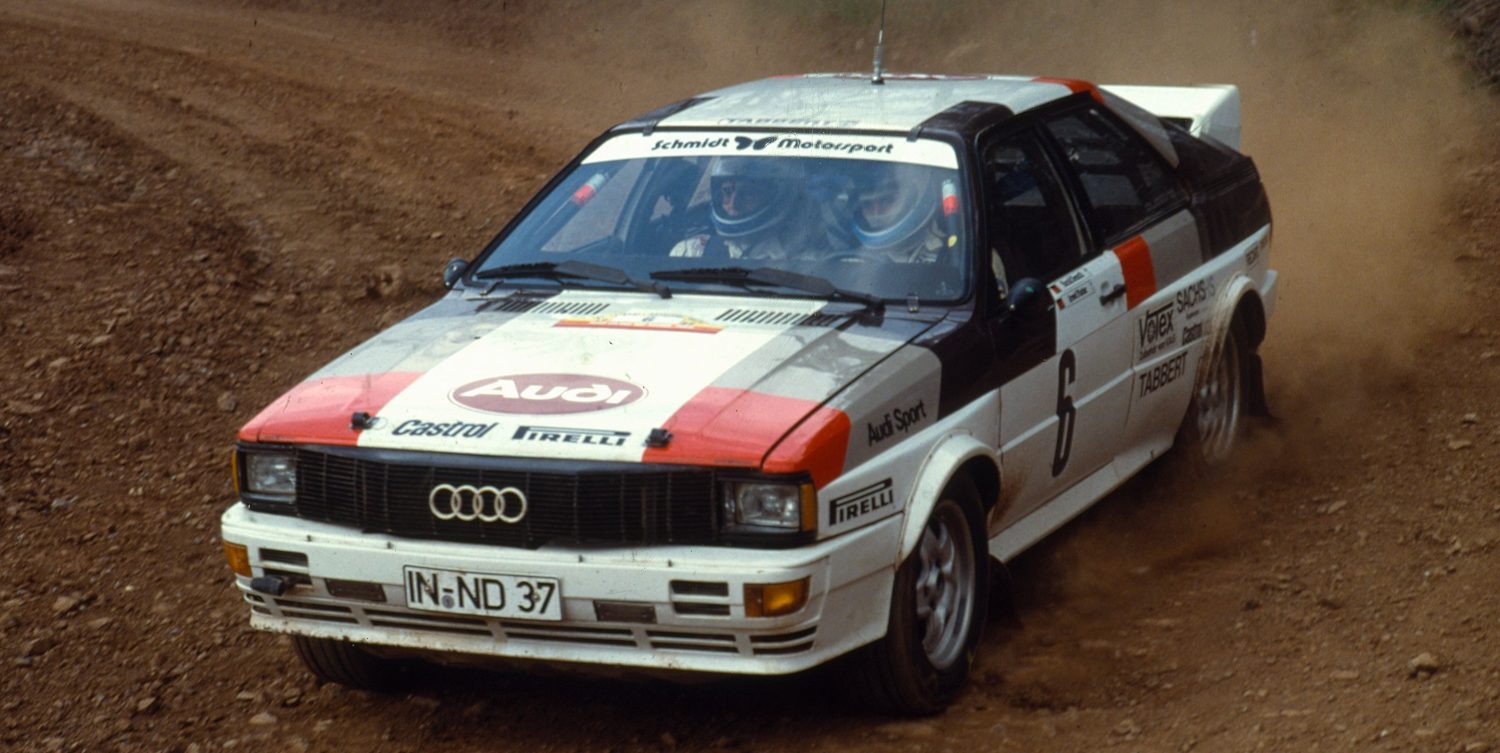
The game-changing Audi quattro made its UK debut, in London, in 1980. Here, five former members of the Audi UK Rally Team recall how it changed the world, and we take a look back at the numerous iterations of the quattro rally car.
Harald Demuth – Rally driver
Two-time German Rally Champion Harald Demuth helped develop the quattro, campaigned Group B and 80 versions in the UK and drove an Audi 100 quattro up a snow-covered Finnish ski jump in the famous 1986 Audi television advert.
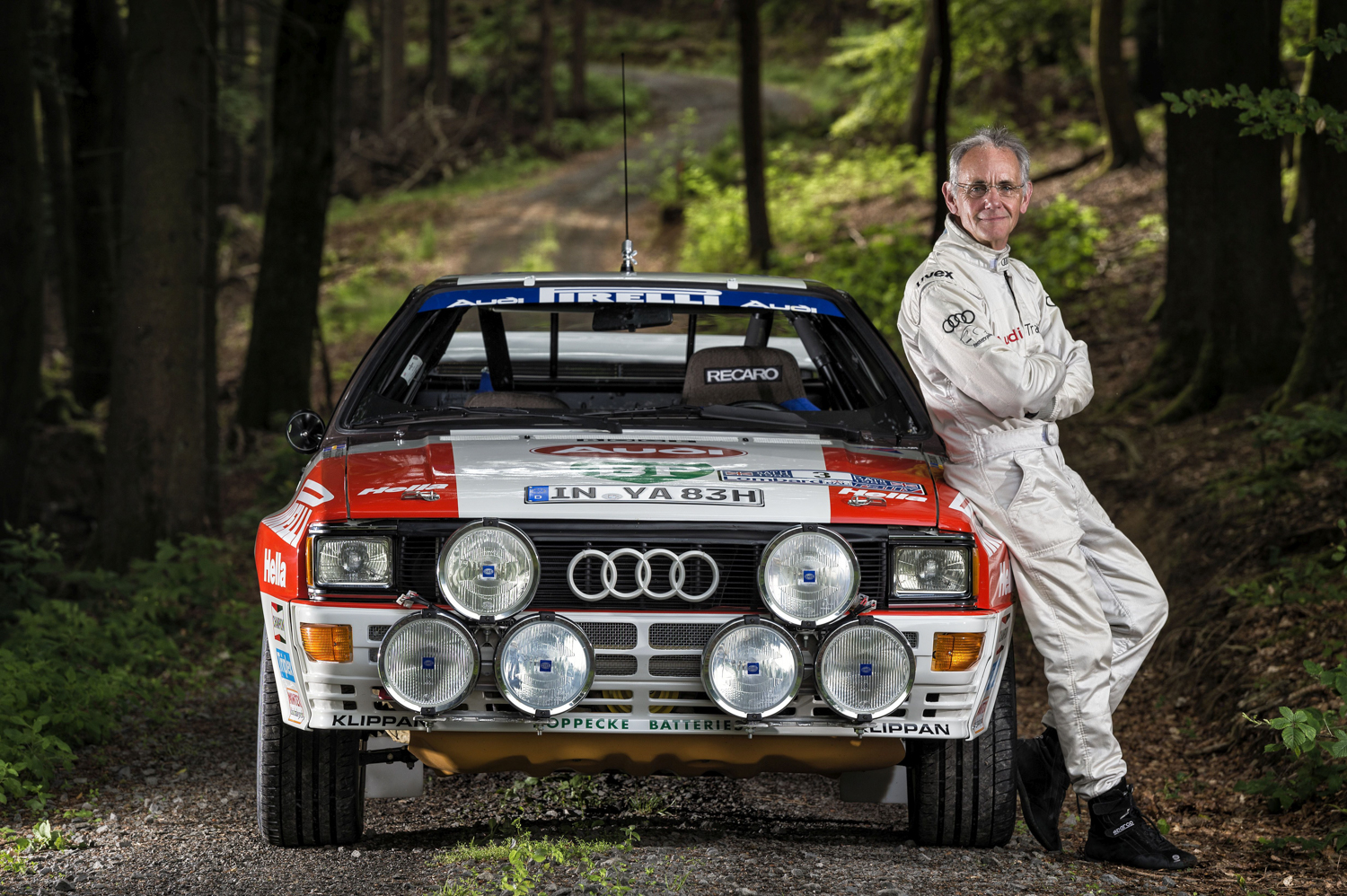
“I was driving for Toyota in the German Rally Championship when I had the choice to sign for Audi or Volkswagen for the 1979 season. Volkswagen had an excellent record with the Golf, but Audi had no presence in rallying. However, there was a lot of whispering behind hands that Audi had something special waiting in the bush, as we say.
“To gain experience of the sport, Audi began rallying a front-wheel-drive 80. We were telling everyone how good that car was, but what we couldn ’ t say was that we were developing the quattro, which was just light years ahead of the 80. We tested an early quattro all-wheel-drive system in an 80 bodyshell.

“On the 1982 RAC Rally, I was lying behind Hannu Mikkola in a quattro. OK, the gap was quite big, but I was on course to finish second.
“Then I had an off on the last day and ended up fifth. David Sutton, who was running the Audi UK rally team, came over and asked me if I would drive for him.
“Over the years I drove the Group B quattro and the 80 quattro in the UK. There was a massive difference in the performance, of course. But the handling and the feeling in the corners was very similar thanks to the all-wheel-drive system.

“I also won the German Rally Championship twice in a Group B quattro. I called my car Christine – after the Stephen King book and film of the same name about the 1958 Plymouth Fury that just kept rebuilding itself and could never be stopped. I ’ d spin off the track and go through a ditch, there ’ d be a big bang, and I’d think, “ This is it – I ’ ve done it this time!” But my quattro would just keep going, and later when I had a look in the service halt, there would only be a little scratch.”

Phil Short – Co-driver
Yorkshire-born co-driver Phil Short was the first Briton to compete and win in a rally quattro.

“ Bj ö rn Waldeg å rd and I won the Welsh Rally in the Audi UK team in the first-generation Group 4 quattro in 1982. It was unbelievable to sit in that car. In those days we were used to Ford Escorts, Vauxhall Chevettes and Talbot Sunbeams with 240PS and rear-wheel drive. Suddenly we had 330PS with four-wheel drive – and the most staggering performance.
“By the time I co-drove Hannu Mikkola on the 1984 Scottish Rally in a Group B A2 quattro, we were up to 400PS. The car was so good. It was an incredible feeling to sit on the start line and know that, unless something went wrong, you were probably going to win. Which we did, by six minutes.
“I don ’ t know how much power the short-wheelbase Sport S1 E2 had when I co-drove Walter R öhrl on the 1985 RAC. I did ask, but the engine guy wouldn ’ t tell me. It was well over 500PS, anyway. It was Formula 1 technology in the forest. When that thing left the start line, it was like a rocket ship. It made your head spin until you got used to the way the forces were working on your body. It was frightening at times. We crashed out, 80 metres down a Welsh mountain, and I remember thinking that the cars cannot go on like this.

“With the switch to more production-like Group A cars in 1987, David Llewellin and I joined the Audi UK team to campaign the normally aspirated Coupé quattro. Suddenly we were back down to 190PS.
“On the first test, we looked at each other and laughed because it felt so slow after Group B. But it got better. We had some great times in it, winning the Scottish and Cyprus rallies.”
David Ingram – Marketing and Public Relations Executive
When the Audi quattro arrived in 1980, it made a huge impression on David Ingram, who had joined the company two years earlier.
“I remember first reading about the quattro in the motoring press – this 200-horsepower, turbocharged, five-cylinder, four-wheel-drive coupé – and I thought wow, this sounds like something else. Then I saw the pictures from Geneva – I was too junior at that time to go out to the motor show. However, I was put in charge of supervising the UK launch, which involved hoisting the car 100 feet up in the air to the top of Kensington Roof Gardens in London.
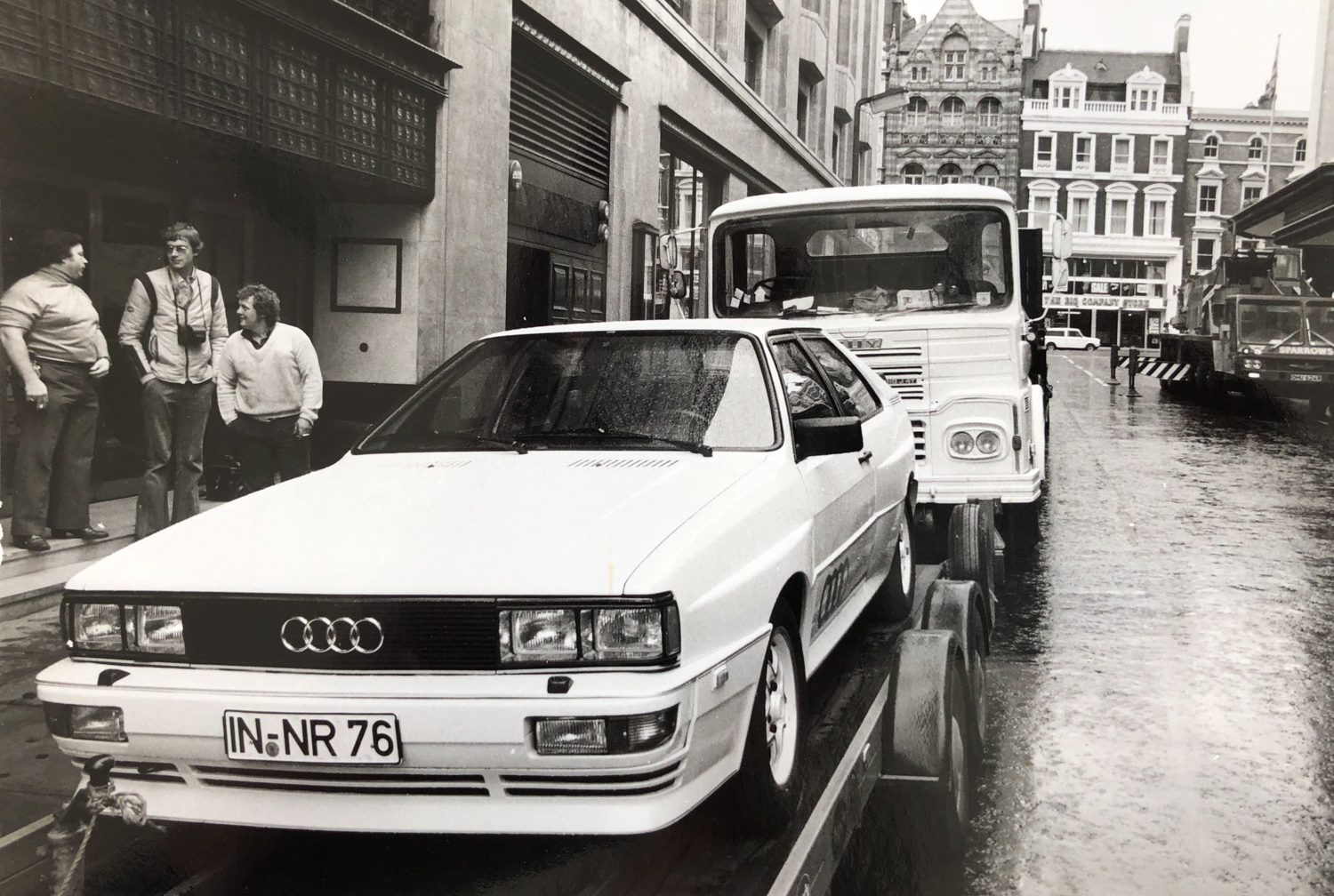
“The first time I got to drive the quattro was amazing. The characteristics of that five-cylinder engine as the turbocharger came in, and the burble as you came off the accelerator – it was just so exciting.
“And then the rally car arrived. I remember watching it on the 1981 RAC Rally – Hannu Mikkola rolling on the first night and then tearing through the forests to win by 11 minutes. Such powerful images come back to me. The following year, when we started our own Audi UK rally team with David Sutton, was like a dream.
“Suddenly I was working with all my heroes, like Stig Blomqvist, who won the British Rally Championship in a quattro in 1982. It makes me misty-eyed now just thinking about those days.

“It was a spectacular era for Audi, and it enabled the company to emerge from relative obscurity in the UK. Plus, it coincided with us starting to work with BBH, the Bartle Bogle Hegarty advertising agency, and adopting the Vorsprung durch Technik slogan.
“The quattro was an awesome road car and an all-conquering competition car. It was a powerful statement, and there ’ s no doubt it contributed significantly to making Audi what it is today.”
Graham Rood – Route Co-ordinator
Every rally team needs a co-ordinator to make sure cars, mechanics and service vehicles are in the right place at the right time. In the Audi UK team during the successful 1980s, that person was Graham Rood.
“My job was to make sure that from the moment the car left the workshop until it won the rally, everything went right – that was the theory anyway. It involved creating a detailed route plan and schedule for the rally car, the chase car that would follow it, the management car and the service vans, which I would then go through with co-drivers.

“On a five-day event like the RAC Rally with 65 special stages, there would be 300 tires to look after and maybe fifty service halts to arrange. There ’ d be fierce competition from all the teams to find farmers who ’ d let us use their yards to patch-up the cars in the middle of the night. But at the same time, there’d be great camaraderie too; we all knew each other, and we ’ d help each other out.
“Chief mechanic Ron Lumley and I would follow the rally car in an Audi 100 Avant. It only had front-wheel drive at that time, but it was a great car, it soaked up a lot of punishment, and there was plenty of space for spare parts. We were all navigating on OS maps – no sat nav in those days.

“One of the most staggering performances was when Walter R ö hrl and Christian Geistd ö rfer came to do the 1984 Ulster Rally in the short-wheel-base 500PS Sport S1 quattro. All the other drivers had been there for days recceing and making pace notes. But R öhr l just wanted to go out for a couple of hours in the dark. He said ‘ OK, I know what these roads are like now,’ and he was good to go.
“That car was incredible. All the other top drivers would come down and watch it leave the start line. It just squatted down at the back, and with the turbo power and quattro grip, it flew.
“Röhrl was up through the gears into fifth before it was out of sight. He was 2.3 seconds per mile quicker than the others and won by four minutes. But as always at Audi, it was a team effort, and everyone played their part.”
Norman Gault – Mechanic
Having worked as a mechanic with the Audi UK rally team during the 1980s, Scotsman Norman Gault helps keep the Audi historic quattro road and competition cars in fine fettle today.
“The Audi UK quattro rally cars were built by Audi Sport in Ingolstadt, Germany. But when we got them, we didn ’ t just put them on a trailer and head off to a rally. We modified them to make them easier to work on when we were stuck out in a wet forest.

“For example, the cars had six bolts holding each driveshaft on. We took three of the bolts off and replaced them with dowels. We modified things like the exhaust mountings, too, so we could get the prop shaft off quicker and change the gearbox faster. We could do that in 20 minutes. On a modern rally car, of course, it’s a lot quicker, but that time was quite phenomenal back then. And the German team adopted our modifications on their later cars.

“Our most potent car was the Sport S1 that we ran at Shelsley Walsh hill climb for Hannu Mikkola in 1986. Audi Germany told us to break the course record – whatever it took. We boosted the engine to just under 700PS. It was astonishing. I have never seen a car leave the line so fast in my life. Hannu could barely change gear quick enough. We broke the record in practice, broke it again during the first run, and then again during the second run.

“These days I help look after Audi ’ s heritage cars. We’ve got a Group B S1 E2 quattro, and when Mich è le Mouton came to drive it up the hill at Goodwood, her eyes got so big behind the wheel – she wanted to do everything at maximum attack again, like the old days. All the drivers we worked with – Hannu Mikkola, Mic h è le Mouton and Stig Blomqvist – were fantastic, and we still have good times when we get together.”
Audi dominated rallying in the early to mid-1980s with a wide variety of quattro models. The brand’s rally success can be traced all the way back to 1912, when an Audi Type C claimed victory on the Austrian Alpine Rally. It was the first of three back-to-back triumphs at the event for the Type C, and company founder August Horch played a crucial role behind the wheel during this famous hat-trick of wins.

Fast-forward to the modern era: when Audi began rallying in 1978, it was not with the all-wheel-drive quattro, but with the front-wheel-drive 80 model. This was the perfect way to get the team match-fit for the arrival of the quattro and a full assault on the World Rally Championship (WRC) in 1981.
The original quattro – or ‘ Ur ’ quattro, as it is known in Germany – was initially rallied under Group 4 regulations in 1981. The first Group B quattro appeared in 1983 and was known as an A1 quattro, with the more powerful A2 version following soon after.

All three versions of the quattro were rallied successfully by the Audi UK team. In 1983, Stig Blomqvist used both the A1 and A2 to win the British Rally Championship, before becoming world champion with Audi the following year. The 1983 British championship also saw Harald Demuth campaigning a four-door saloon 80 quattro.
The short-wheelbase Audi Sport quattro S1 made its UK debut on the 1984 Ulster Rally, where Walter R ö hrl blitzed the opposition. By 1985, the winged Sport quattro S1 E2, the ultimate rally quattro, had replaced the S1 on the world stage.

Audi UK ran an S1 E2 for Mic h è le Mouton on two events in 1985. However, the team continued to find further success by campaigning the S1, winning the National Breakdown and Welsh rallies with Hannu Mikkola in 1986.
After the ultra-powerful Group B cars were banned at the end of 1986, Audi UK signed David Llewellin to drive a Group A Coupé quattro in 1987. The car still had the advantage of all-wheel drive, but its five-cylinder engine lacked a turbocharger. A win on the Scottish Rally and second on the Circuit of Ireland were its best results in that year ’ s British Rally Championship.

Audi Sport debuted its 200 quattro on the 1987 Monte Carlo Rally, where R ö hrl finished third. Three months later, Mikkola won the Safari Rally, chased home by R ö hrl in second. The big executive saloon was also campaigned by Audi UK in 1988, while an Audi 90 quattro also appeared on events in Europe around that time.
The Audi UK team withdrew at the end of the 1988 season, returning to the rally stages in 1993 with a Group N Coupé S2 quattro for Shell Scholarship winner Jonny Milner. The Yorkshireman scored an impressive fifth place overall in the road-going-specification car on the Pirelli International Rally.

Audi R8: The Autobiography of R8-405
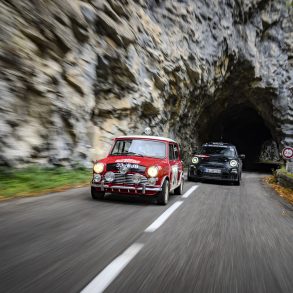
Mini celebrates 60th anniversary of Monte Carlo Rally win
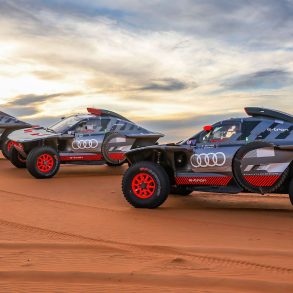
Dakar Rally 2024: Team Audi Sport prepares
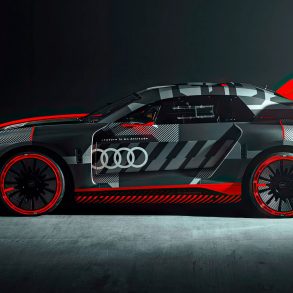
Audi Sport celebrates 40 years
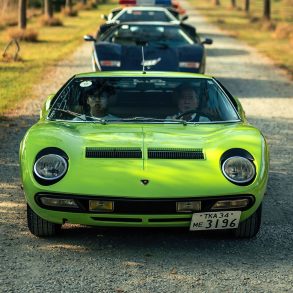
Classic Lamborghinis Take to the Road
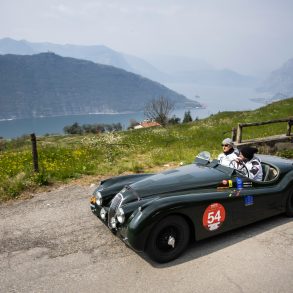
Franciacorta Historic 2023
Leave a reply cancel reply.
You must be logged in to post a comment.
- Free Newsletter
Get Our Free Weekly Newsletter


Find of the Day: 1983 Audi 80 quattro Works Rally

words: Bill, photos: RM Sotheby’s
Whoa…this could be the Find of the Year. This is a legit Audi Sport 80 quattro rally car. It is thought to be one of just four Works 80 quattros built. Originally a Group B car, it was converted to Safari-spec…even cooler. Here’s the ad:

- Known history from new, first registered in 1983 by VAG UK in Milton Keynes
- Thought to be one of just four Works Audi 80 quattros built at Ingolstadt
- Originally built by Audi Sport Germany
- Fielded by Audi Sport UK and David Sutton Motorsport in the 1983 British Open Rally Championship in Group B
- Converted by Audi Sport in 1984 to “Safari-spec”, and entered in the 1984 WRC Safari Rally, where it finished 1st in class, and 10th overall in Group A
- Fielded in the 1985 WRC Safari Rally, where it retired whilst leading its class
- Purchased by the consignor in 2014; restored to an extremely high standard from 2015 to 2016
- Participated at the Goodwood Festival of Speed in 2017 and 2018, as well as Speed Machine in 2019
- Highly eligible for historic rally events including the Goodwood Festival of Speed, Rally Legends, and Slowly Sideways
- Accompanied by an impressive history file including FIA homologation papers and period photos, 1990 RAC Rally Pass, and restoration invoices
Announced in September 1978, the redesigned Audi 80 saloon began to reach European customers by October of that year. Based on the Volkswagen B2 platform, the body was penned by legendary automotive designer Giorgetto Giugiaro, who had previously designed cars such as the Alfa Romeo Alfasud, the De Tomaso Mangusta, and the Lotus Esprit. As part of a concerted effort to move upmarket, Audi intended for the 80 to compete directly with the BMW 3 Series in the compact executive saloon class.
Soon after the launch, Audi’s motorsport engineers turned their attention to the 80 platform, with a view to increasing performance and handling in order to participate in competition. Having already released the mesmerising four-wheel-drive Audi quattro B2—the all-conquering “Ur-quattro”, which shared the body shell and multiple components from the Coupé version of the Audi 80— the 80 line up became the first to receive Audi’s innovative four-wheel-drive technology. In 1983, Audi offered the 80 saloon in quattro specification, the top-of-the-range model further embellished by twin headlamps, a front spoiler with integrated fog lamps, a body-coloured rear spoiler, “quattro” script on the boot lid, and a twin-pipe exhaust.
On 2 March 1983, Audi Sport UK, in partnership with David Sutton Motorsport of Acton, London, announced that the Audi quattro and Audi 80 quattro would be entered in all rounds of the 1983 British Open Rally Championship. A copy of this press release is on file, with an image depicting three quattros and one quattro 80. The car offered here, chassis number 85DA126497, is the very example pictured in this 1983 Audi Sport press release.

CHASSIS 85DA126497
Manufactured at the beginning of 1983, chassis 85DA126497 was assembled at Audi’s Ingolstadt factory with the assistance of David Sutton Motorsport. It should be noted, that as an Audi Sport Works car, Matter-built bodies with significant reinforcements over a standard shell were supplied. In addition to the specialist body, the car featured a four-cylinder, 2.1-litre Group A quattro engine, further to suspension and other mechanical components—specifically made for Works cars—designated as Group B parts. The use of both Group A and B mechanicals resulted in the accompanying homologation papers classifying this example as “Group A/B”. The vehicle was purchased new by VAG UK of Milton Keynes, and first registered in early 1983 by Sutton Motorsport with the Isle of Man registration number “VMN 44”.
Shortly after its arrival in the United Kingdom, VMN 44 was entered into the Mintex International Rally in York, England. Numbered “6” and driven by Harald Demuth and Mike Greasley, the Audi 80 quattro performed well on its debut, finishing 5th overall and 4th in class B. Two months later, on 1 April 1983, the Audi made its way across the Irish sea to race at the Rothmans Circuit of Ireland. Driven again by Demuth and Greasley, the pair worked their way up from 10th to 6th overall by the fourth leg of the five-day rally. Unfortunately, towards the end of the fourth leg, at 27 km, the pair crashed at Taylors Hill, resulting in an early retirement.
Repaired after the incident in Ireland, the 80 quattro returned to Great Britain, ahead of being entered in the Castrol International Welsh Rally from 6 to 8 May 1983, racing at Builth & Llandrindod Wells on gravel and asphalt surfaces. Wearing number “15”, this Audi featured a revised driver line up, with Darryl Weidner replacing Demuth, sitting alongside Greasley. The duo fared well over the three days, moving up the table from 19th to 11th overall, finishing 5th in Group B. Demuth returned as the main driver for the Ulster Rally on 29 July 1983 for what would be the penultimate outing in of the year, though he and co-driver Arwed Fischer were unable to continue the Audi’s run of form, with an engine failure resulting in early retirement. The car was later registered in the United Kingdom by VAG UK, being issued with the registration number “A180 UNH” on 14 October 1983.
The final rally of 1983 was at the Audi Sport National Rally in Aberystwyth, Wales, on 15 October, an event that highlighted the competitive nature of the 80 quattro. Piloted by Francis Tuthill and Roger Freeman, the pair stormed their way up the rankings, charging from 25th in the first stage to 13th overall, ultimately finishing 1st in Class 3. Digitised period footage from the 1983 season can be found on file.

For 1984, the story of this rare Audi 80 quattro takes an interesting turn. Prepared either by Sutton Motorsport or Audi Sport Germany, the car was converted to “Safari-spec”, before entered in the 1984 Safari Rally. Piloted by Basil Critcos, alongside co-driver John Rose, the Audi was campaigned wearing the Kenyan registration plate “KWD 473”. After leasing the car from VAG UK, Critcos became the second owner of the 80 quattro. He received factory support from Audi while he raced in Kenya, as it was an official Audi Sport entry.
This Audi made its African debut in Nairobi, Kenya at the 1984 Marlboro Safari Rally on 19 April. Assigned race number “28”, Critcos and Rose campaigned hard in the only Audi 80 in a competitive class. After five intense days, the duo’s hard work and determination had paid off, with the car coming home 10th overall and 1st in the A8 class. Relative to its peers, the 80 quattro proved a hardy and consistent competitor, finishing 13 places ahead of the vehicle that finished 2nd in the A8 class.
Disappointingly, the duo’s success wasn’t to be repeated, with an abortive attempt at the 1985 Safari Rally resulting in early retirement. After the dust had settled, Critcos sent the Audi from Kenya back to the Audi UK to be re-prepared by Paul Ridgeway, a mechanic recommended to Critcos, used by both Audi UK and Sutton Motorsport. On 13 February 1986, Ridgeway registered the car in his name. He kept the Audi for three years, before it was bought by Chris Collins with the intention of contesting the 1989 Mintex Rally, as he had crashed his car in previous event. Following the rally, Collins sold the car to its fourth owner, Roy Gillingham of PIM Racing, on 26 May 1989. While uncovering the history of this vehicle, the current owner met Collins, who stated that the car performed exceptionally well in rough and slippery rally stages.
Gillingham’s first event in the 80 quattro was at the 1989 Shell Oils Cumbria Rally on 2 September 1989, which he entered with co-driver Stuart Larbey. Starting in 56th place, the duo climbed up the rankings over 120 km of loose surface stages to finish 48th overall, and 9th in the A8 Class. The car’s next outing was at the 1989 Lombard RAC Rally in Nottingham, England. Starting on 19 November, the punishing five-leg rally covered a total distance of 3,082 km. Gillingham and Larbey began the race in 52nd position, finishing 45th overall, and 20th in the A8 Class.
Following the end of the 1989 season, Gillingham decided to update the car by removing front and rear sections, replacing them with updated Audi 90 panels while the rest of the exterior was painted in white with red, grey and black. After completion, Gillingham registered the Audi with the RAC Motor Sports Association and applied for a Rally Special Stage Vehicle Log Book, which is included in the history file. Issued on 24 January 1990, this car was officially recognised as an Audi 90 quattro and entered its first and final event of that year—the 115 km Mazda Winter Rally. Numbered “57”, Gillingham and Stuart finished 26th overall, and 13th in their class. After the rally, Gillingham decided to field another one of his vehicles in future events, and placed the 80 quattro into long-term storage.
In 2014, while at a track day event, the current owner was informed of an ex-Works Audi 80 quattro that had remained in storage for 25 years. At the time it was thought that no ex-Works cars remained in the public sphere, but the soon-to-be owner went down to inspect Gillingham’s car and discovered that it in fact was a long-lost ex-Works Audi 80 quattro. Passionate about rally cars, he decided to purchase this rare Audi, knowing nothing about its past, but understanding that this vehicle was equipped with a significant number of rare Audi Sport Group A/B components found only on ex-Works vehicles. Discovering an example that retained so many of its Works components is highly unusual due to their rarity and value. So, Gillingham set about saving a piece of British motorsport history. The owner carried out extensive research of this ex-Works car over several years, discovering that it had in fact competed in both the 1984 and 1985 Safari Rally, as well as being the ex-Audi Sport UK and Sutton Motorsport Works car. Details of this storied history are documented in the accompanying file, with fascinating correspondence between the owner and previous drivers and historians. With its provenance confirmed, the owner sent this Audi to marque specialist AM Cars, in Ilminster, Somerset, which in 2015 began a full restoration with the aim of preserving the originality of the car and retaining the all-important Audi Works components with which it was originally equipped.

RESTORATION
AM Cars began by stripping the car back to a bare shell, which was then steam-cleaned before being soda-blasted and thoroughly coated with zinc primer. Following this process, the owner set about returning the quattro back to its original Audi 80 specification. He purchased two standard donor Audi 80s, before removing the Audi 90 front and rear ends that this car wore, so to reverse the conversion work that Gillingham had done back in 1990. In addition to this work, AM Cars carried out welding and rust repairs to the shell, which had suffered after siting dormant in a barn for two decades. Invoices on file show that over £5,000 was spent to ensure the structural integrity of the car. Following completion of the repairs, AM Cars painted the 80 quattro in its original white colour, finishing the colour scheme in the period Audi Works livery that the car wore from 1983 to 1985.
In addition to the structural and cosmetic work, all mechanical components were either refurbished or replaced as part of this thorough restoration. With the old fuel cell needing replacement, a one-off copy was fabricated by ATL Ltd of Milton Keynes at a cost of £1,641. The brake callipers and master cylinder were refurbished by Questmead Ltd of Rochdale, totalling £886. Both subframes were powder coated and suspension rubbers were replaced, while the rare Audi Works parts—including the shock absorbers, uprights, wishbones, anti-roll bars—were rebuilt by Cornering Force Ltd, of Harrogate. The Works engine, meanwhile, was rebuilt by AM Cars, invoices on file highlighting how the bores were honed, with the camshaft, bearings, piston rings, and various other components replaced in order to breathe new life into the 2.1-litre quattro engine.
Following an exhaustive 12-month restoration—the total cost of which is estimated by the current owner to be at least £50,000—the Audi made its return to the special stage, taking part in a number of historic motorsport events including the 2017 and 2018 Goodwood Festival of Speed, and Speed Machine in 2019.
This remarkable survivor presents a wonderfully rare opportunity to acquire an ex-Works Audi 80 quattro that competed during the heyday of British rallying. Not only was this highly competitive 80 quattro campaigned as an Audi-backed Works car, but it also raced twice in the Safari Rally, before returning to the UK to continue its competition career. Thought lost for 25 years, this important piece of Audi Motorsport history has enjoyed a thorough restoration, finished to a high standard and retaining all of the rare and desirable Audi Works components that make it such a unique vehicle. It must be noted that other than the engine, all the mechanical parts found on this example are Audi Sport Group B components.
Immaculately finished in white complemented by Audi’s eye-catching 1980s livery, this presents an unmissable opportunity to own a bona fide ex-Works 80 quattro that is highly eligible to compete in historic Group A/B rallying, and a golden ticket to events such as the Goodwood Festival of Speed, Rally Legends and Slowly Sideways.

Something about seeing a quad of lights on the front of an Audi just stirs emotions but add another pair? Group B may be more well known of the rallies but the safari circuit is equally as cool. This 80 competed in both. It has documentation out of this world . Lost for 25 years, it was put through an extensive restoration. Offered at £150,000 ($180,828), it seems to me to be a bargain especially after upwards of £50,000 worth of restoration. After all, there aren’t too many Works cars out there in private hands. If you want this one in your hands, you can find it on the RM Sotheby’s site HERE .

Share this:
- Click to share on Twitter (Opens in new window)
- Click to share on Facebook (Opens in new window)


Audi Quattro (1981-1987) - First Four-wheel-drive Rally Car
August 17, 2015 Cars , Memories , Spotlight Marijan Malcevic
In the history of the World Rally Championship, there have been a number of cars that have marked a specific period of competition, and Audi Quattro certainly deserves a place among them. For a lot of people, this car is synonymous with the ‘golden era’ of Group B cars. Even if you do not belong to that category, there is one standard that the car undeniably set – the Audi Quattro was the first rally car ever in WRC with a permanent four-wheel-drive .
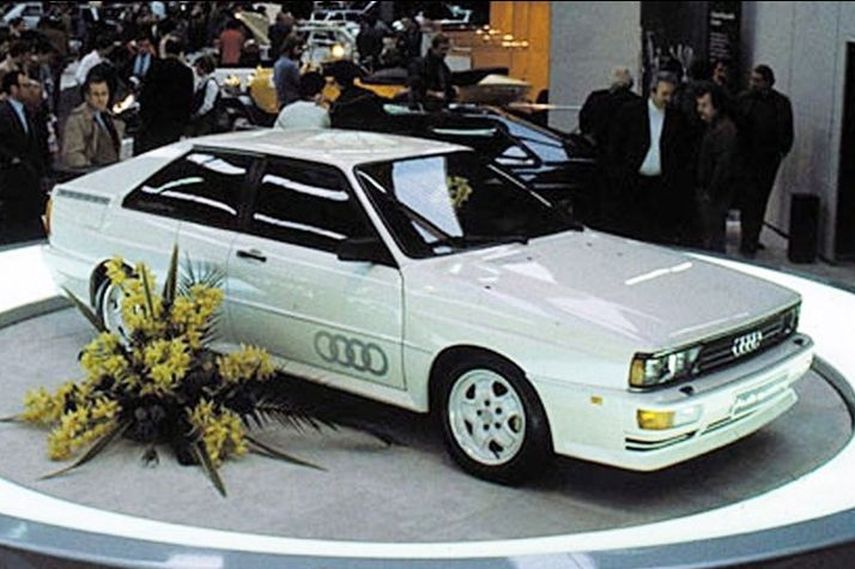
Audi Quattro at 1980 Geneva Motor Show
Starting with a victorious debut in the 1981 WRC season
Back in 1979, the FISA legalized all-wheel-drive for rallying, but most manufacturers believed it was a too complex solution and that cars would be too heavy. Audi’s engineers were busy preparing the road version of the first Audi Quattro and they decided to produce a 4WD rally car. The Audi Quattro was presented at the Geneva Motor Show in March 1980, and the racing version had a competitive debut driving at the 1980 Janner Rallye in Austria.
It was largely based on the body shell of the road-going Quattro models and the engine of the original competition version which produced approximately 300 bhp. The original engine was the 2,144 cc inline-5-cylinder 10 valve SOHC, with a turbocharger and an intercooler. It produced 200 hp and torque of 285 Nm, propelling the road-version Quattro from 0 to 100 km/h in 7.1s and reaching the top speed of over 220 km/h . The engine was eventually modified to a 2,226 cc inline-5 10 valve. Later in 1989, it was alternated to a 2,226 cc inline-5 20v DOHC setup, producing 220 hp.
In 1981, Audi Quattro debuted in the World Rally Championship with immediate success. Hannu Mikkola won two rallies (Sweden and Great Britain) and achieved one more podium (Finland), while Michele Mouton won Rallye Sanremo and became the first and only woman to win the world rally.
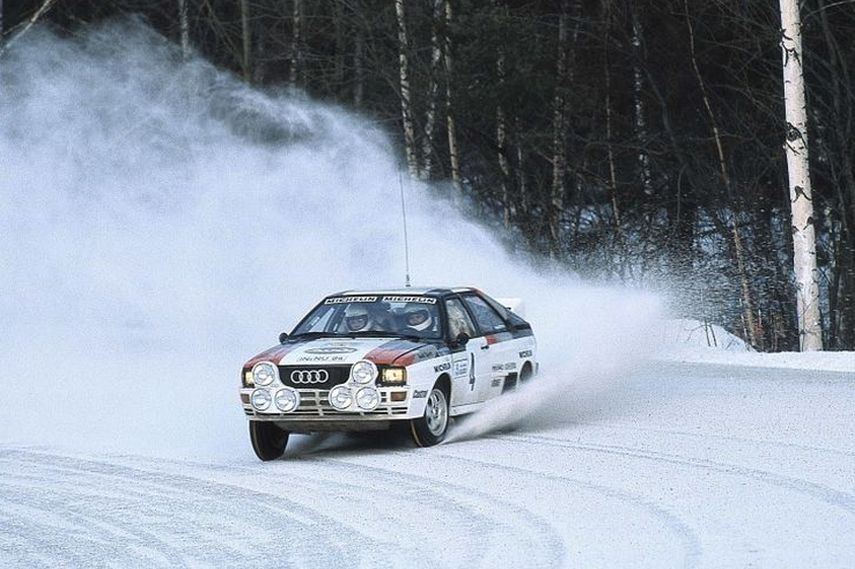
In 1981 Audi revolutionized the World Rally Championship with the “original” quattro
Audi became the 1982 manufacturers’ world champion
In 1982, Audi won seven rallies and became the manufacturers’ world champion. In the drivers’ standings, Mouton was 2nd, Mikkola 3rd, and Stig Blomqvist 4th. This was the first year of the new Group B regulations, so Audi introduced the A1 evolution of Quattro , raising the power from turbocharged inline 5-cylinder engine to around 350 hp.
The next evolution A2 was introduced during the 1983 season. Combining the A1 and A2 versions, Audi’s drivers had won five WRC races in the 1983 season and Hannu Mikkola became the world champion. The team was 2nd in the classification behind Martini Lancia.
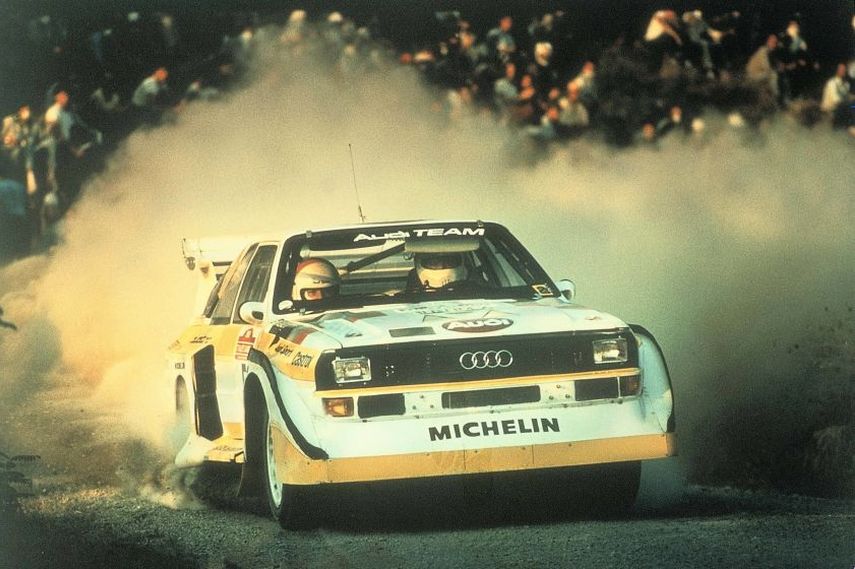
In 1985, Walter Röhrl was the winner of the Rally San Remo with the Audi Sport quattro S1
Double world title in the 1984 season
The 1984 season was the most successful for Audi, with Stig Blomqvist becoming the world champion and winning the second world title for the team that now consisted of the new entrant to the team, Walter Röhrl , together with ‘old’ drivers Mikkola and Mouton. They had two winning cars that season: the first was an old Audi Quattro A2 (winning six rallies) and the other was the newly-introduced shortened Audi Sport Quattro S1.
It featured an all-aluminium alloy and a 2,133 cc 20v DOHC engine slightly smaller than that of the Audi Quattro (in order to qualify for the 3-liter engine class after the scale factor applied to turbo engines). In the road-going version, the engine was capable of producing about 305 bhp , with the competition cars initially producing around 450 bhp.
In the 1985 season, Peugeot took over the domination with 205 T16, and Audi ended up winning only one WRC race (Walter Röhrl, Sanremo). The team finished second in the championship.
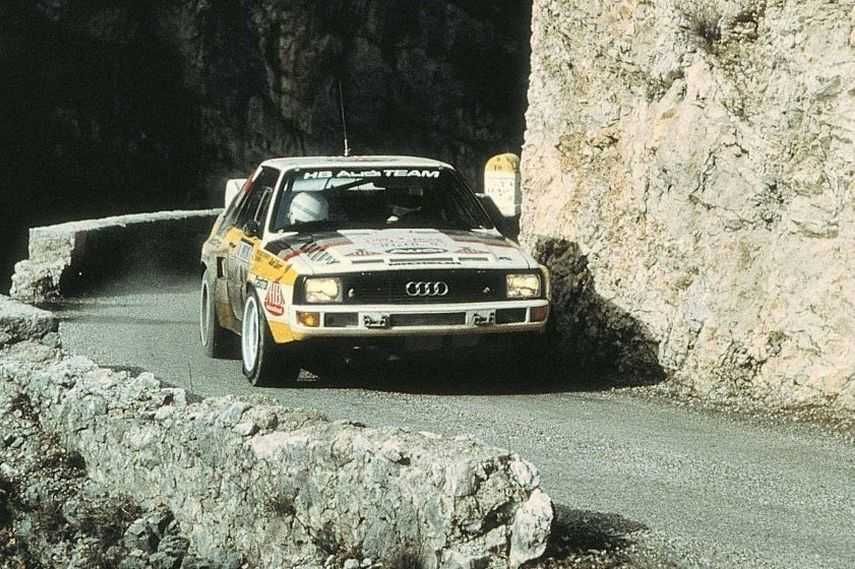
In 1985 Peugeot dominated in the championship, Audi scored only one victory
S1 version of Audi Sport Quattro had around 600 hp
At the end of 1985, the Audi Sport Quattro S1 E2 was introduced as an upgrade of the Audi Sport Quattro. The car featured an inline 5-cylinder engine that displaced 2,110 cc and produced an officially quoted figure of 350 kW (476 hp). The actual power figure of that monster was in excess of 500 bhp.
In addition to the improved power output, an aggressive aerodynamic kit was added which featured very distinctive wings and spoilers to the front and rear of the car to increase downforce. The weight was reduced to 1,090 kg and the S1 could accelerate from 0-100 km/h in 3.1 seconds . Some of the cars were supplied with a “power-shift gearbox”, a forerunner of the DSG technology.
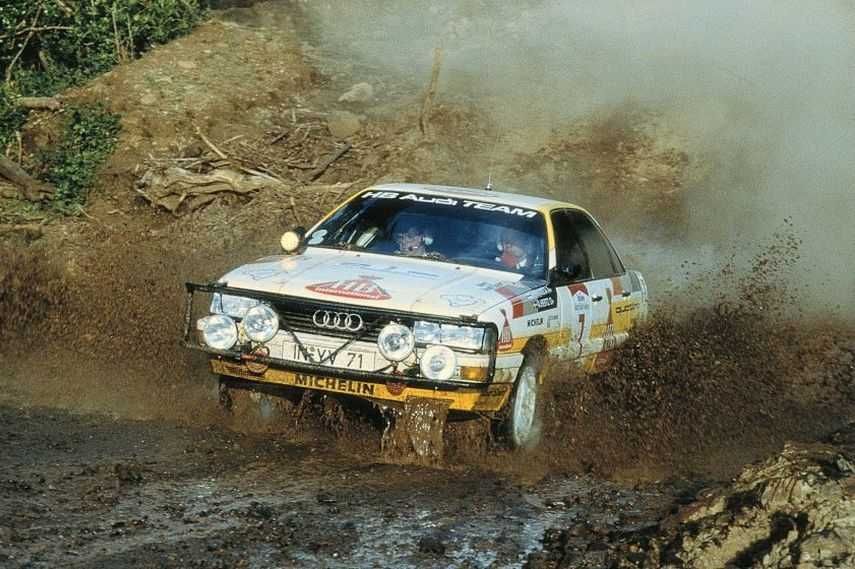
Hannu Mikkola with Audi 200 quattro at 1987 Safari Rally
Ahead of the curve at the famous Pikes Peak
The S1 E2 would become the final car produced by Audi for the Group B. The final factory machines of 1986 were rated at about 600 bhp . After the tragic 1986 Rally Portugal, when Henri Toivonen and his co-driver Sergio Cresto died, the works team withdrew from the championship.
Group B cars were banned and replaced with Group A in 1987. Audi introduced 200 Quattro, with which the team achieved 2nd place in championship. In addition to the WRC competition, Audi Quattro won the Pikes Peak International Hillclimb three times in a row: Michele Mouton in 1985, Bobby Unser in 1986, and Walter Röhrl in 1987.
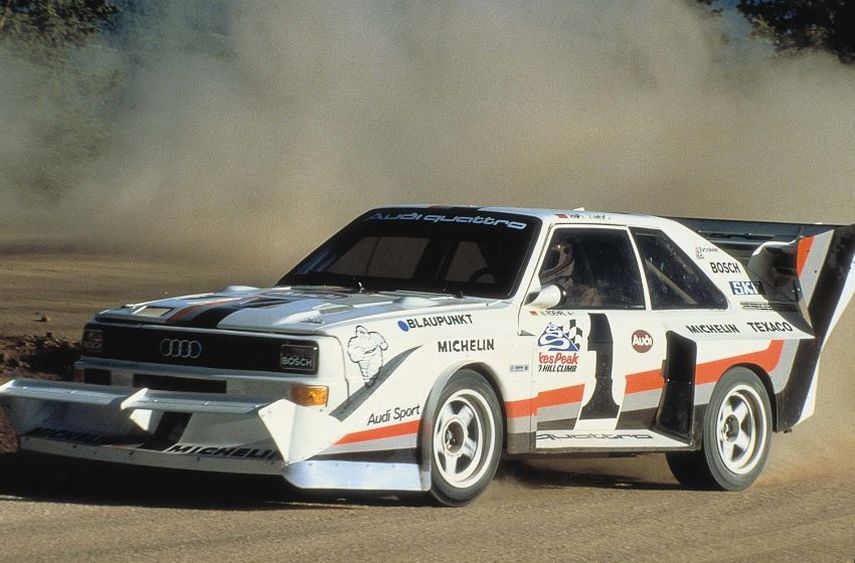
In 1987 Walter Röhrl storms the Pikes Peak in record time with the Audi Sport quattro S1
The best cars are never truly outdated
Thirty years after the Group B era, we can conclude that Audi Quattro, in all its versions, left an indelible mark on the history of rally driving, with 23 WRC victories, 2 manufacturer and 2 driver titles.
Audi paid tribute to that car using the badge ‘quattro’ for all its vehicles with permanent four-wheel-drive (continued even today), so we can safely say that the Ur-Quattro ( Ur standing for original in German language) is still very much alive, even today.
Video : Tribute to Audi Sport quattro
Photos : audi-mediacenter.com
Related Posts
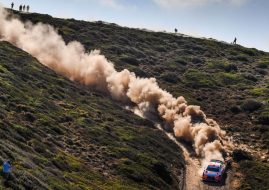
Top Drivers

QUICK LINKS
- Advertise With Us
- Terms Of Use
- Opt-out preferences
ABOUT SNAPLAP
SnapLap is a motor-sport data resource for professionals and motor-sport fans.
© 2015-2024
Made for you by . All rights resrved™
- Press & Media Press & Media
- School students School students
- Audi in football Audi in football
- Audi in winter sports Audi in winter sports
- Search Close
Audi in your Region:
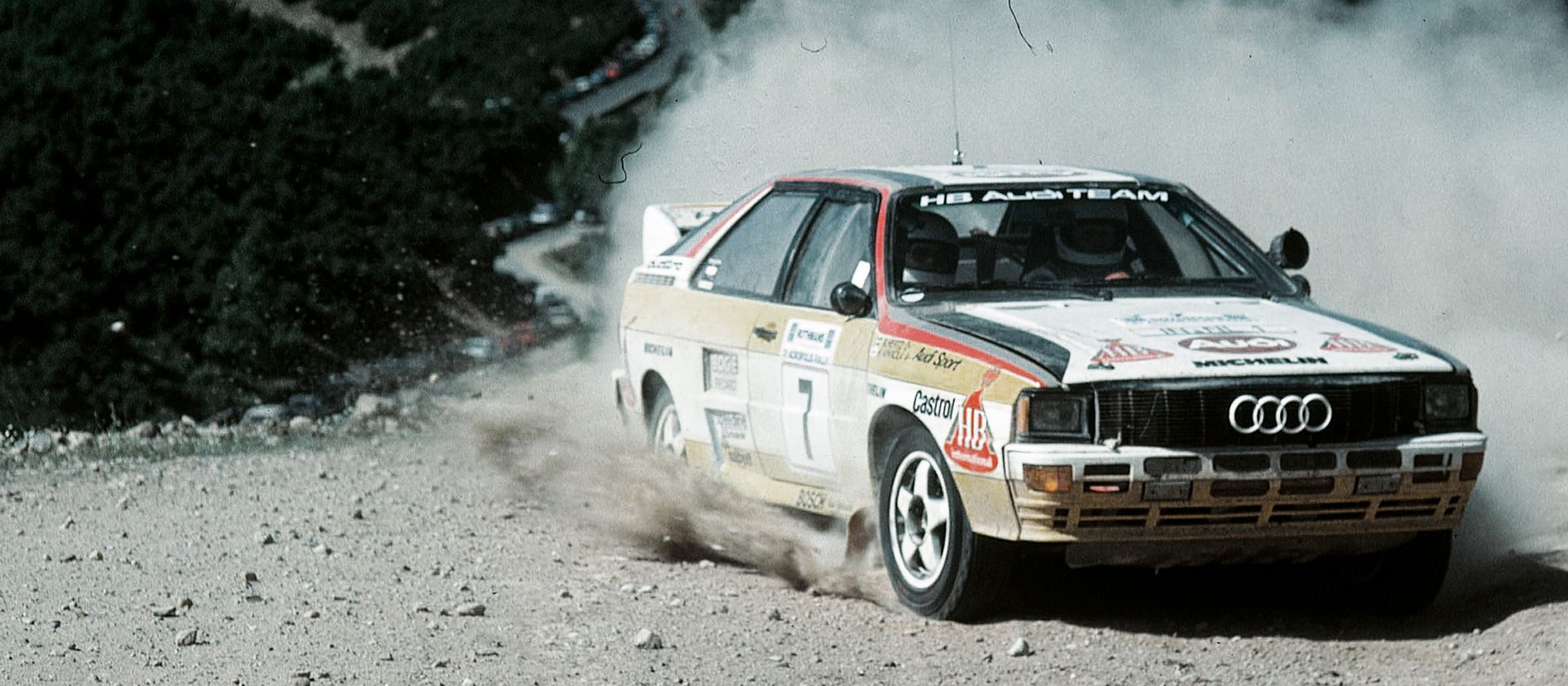
Audi in motorsport
- Racing History
1978–1987: The quattro era
Reading Time: 2 min
The beginning: quattro
The rebirth of the Audi brand in 1965 and the merger of Auto Union and NSU in 1969 added new significance to the topic of motorsport. Excluding the era prior to the Second World War, including the legendary Grand Prix cars of Auto Union in the 1930s, Audi’s motor racing heritage began with the quattro.
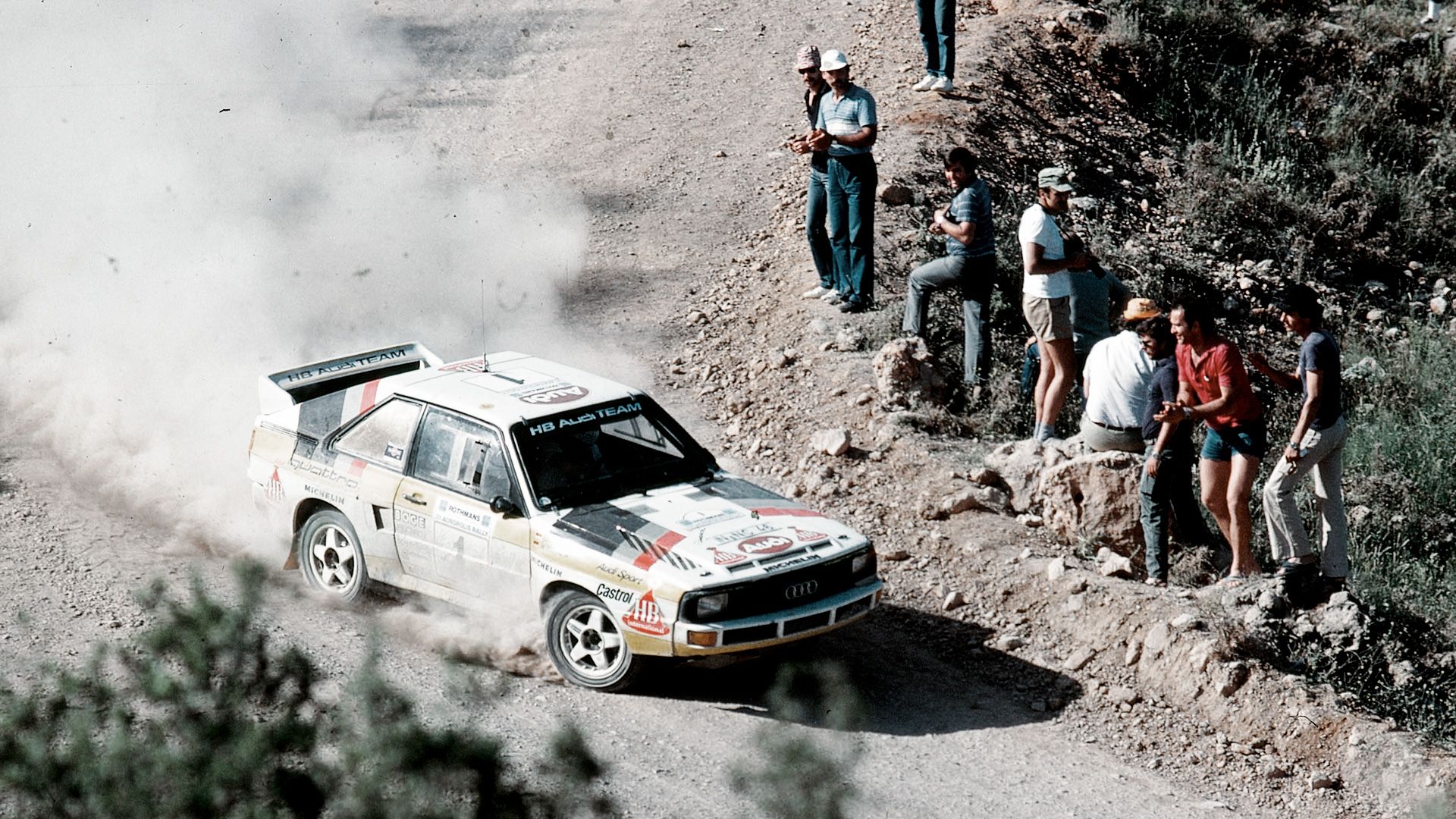
Audi wins the World Rally Championship
In 1978, the Audi Sport department was set up to prepare for motorsport commitments. Three years later, Audi celebrated a sensational debut at the Monte Carlo Rally: after ten kilometres of the first stage and on a snow-covered track, Hannu Mikkola overtook a Lancia Stratos that had started a minute before him. In the autumn of 1981, a WRC round was won for the first time in history by a female: Michèle Mouton at the San Remo Rally. Dominant victories and two drivers’ and manufacturers’ titles with the ‘Ur-quattro’ in the World Rally Championship between 1982 and 1984 were important factors for the market success of quattro drive.
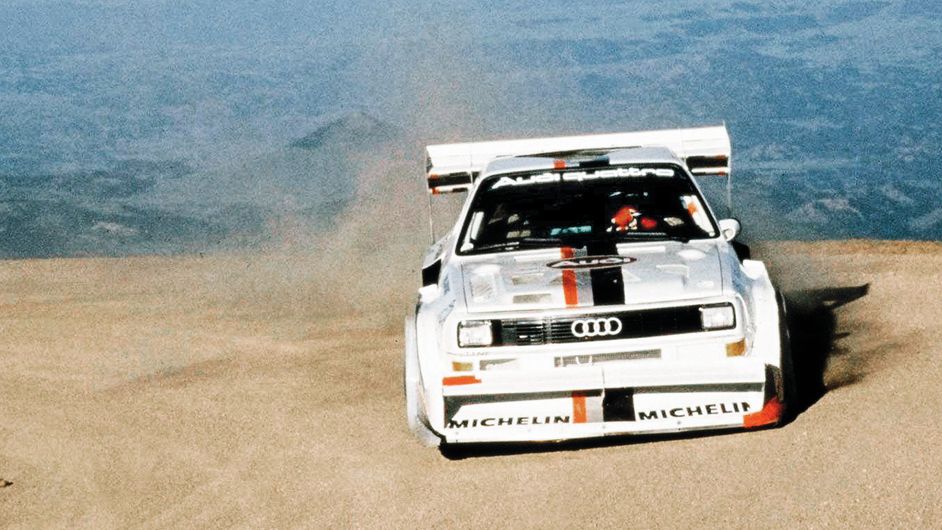
Record on Pikes Peak
From 1984 to 1987, Audi took part in the famous Pikes Peak Hillclimb with various versions of the quattro – winning three times in succession. Behind the wheel of the Audi Sport quattro S1 in 1987, Walter Röhrl became the first driver to complete the hillclimb under the eleven-minute mark.
Goodbye rallying, hello circuit racing
In 1986, the first six quattro years came to an end. Mouton, Mikkola, Stig Blomqvist and Walter Röhrl had won 23 world championship rallies and taken four titles home to Ingolstadt. With a near-standard Group-A model, Audi even won the gruelling Safari Rally in the transitional year of 1987. This era was a model example for the realisation of real technical advances through motorsport: quattro as a winning idea. After Audi had turned rallying upside down and conquered Pikes Peak (USA) three times in a row in record time with the Sport quattro, the brand then made quattro drive suitable for circuit racing: first with the Audi 200 quattro in 1988 in the Trans-Am Series and the Audi 90 quattro IMSA-GTO in the USA in 1989, then in 1990 and 1991 with two championship titles for the Audi V8 quattro in the German Touring Car Championship (DTM) – and also with the A4 quattro in the Super Touring Cars competition for production-based cars. In 1996, the Audi A4 quattro won the title in seven countries. Between 2012 and 2016, four-wheel drive returned to the racetrack as e-tron quattro in the LMP1 Audi R18 race car.
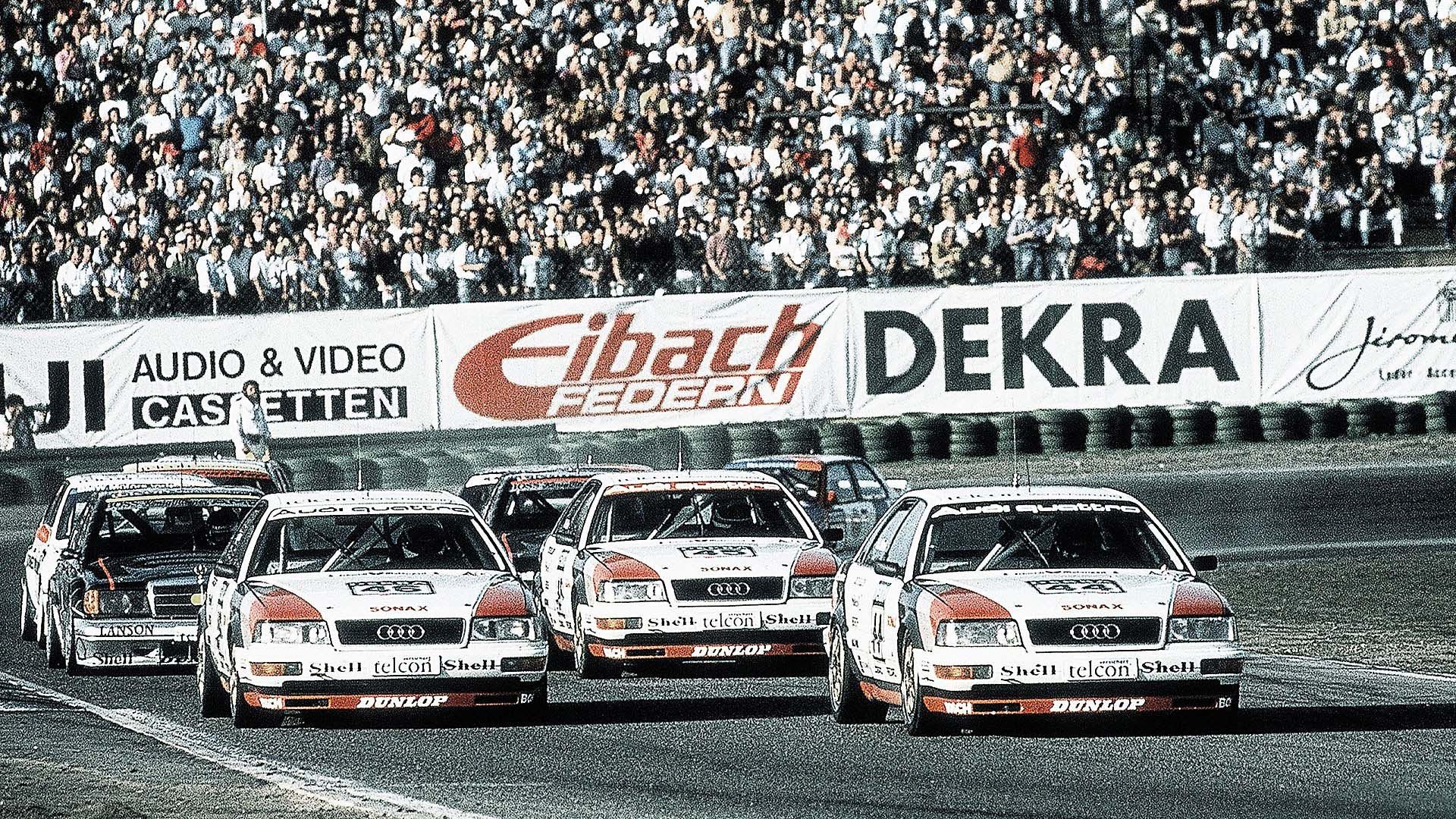

You might also be interested in
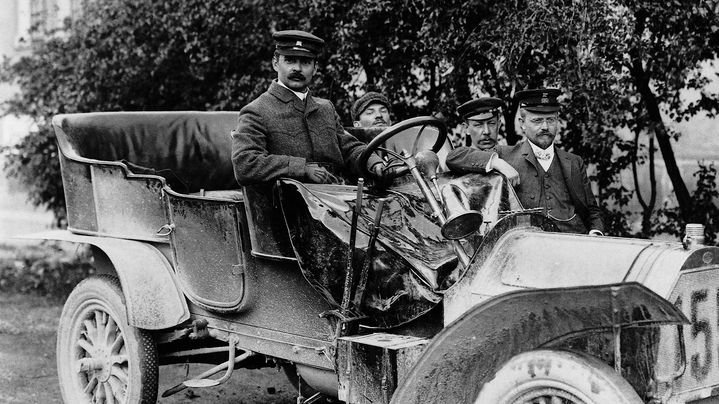
1906–1926: Origins of racing
The motorsport origins of all the companies symbolized by the “Four Rings”, as well as NSU, go back to before the First World War.
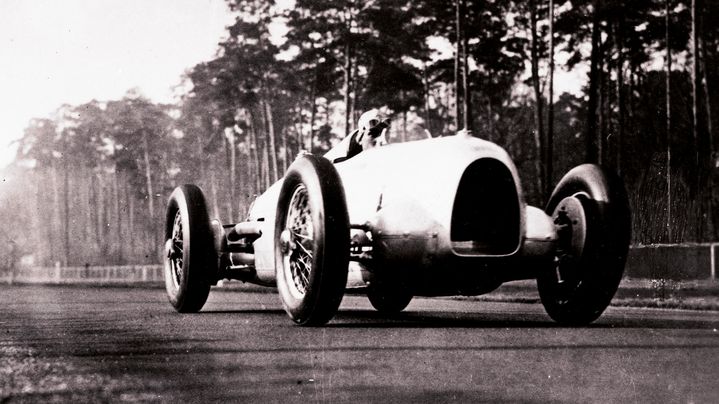
1932–1939: The age of the Silver Arrows
Following the 1932 merger of the automotive companies Audi, DKW, Horch and Wanderer it was important to promote the new Auto Union name. Motorsport was the ideal platform.
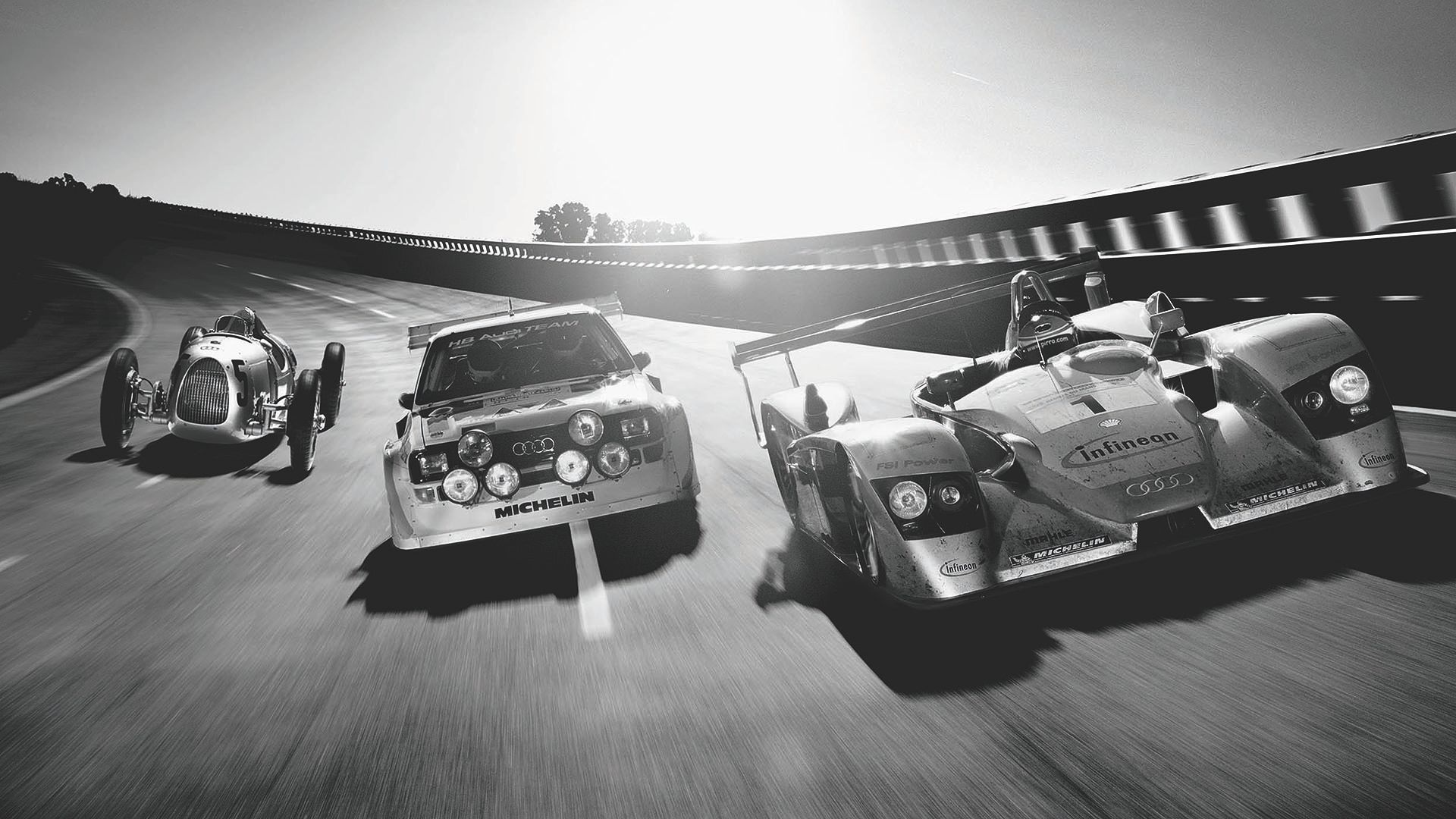
Audi racing
Audi positions itself as the sportiest supplier in the premium sector, and for this it has the perfect basis: Motorsport. Sportiness, pioneering technology and an evocative design lay the foundations for Audi brand’s success. The genes for this stem from racing.
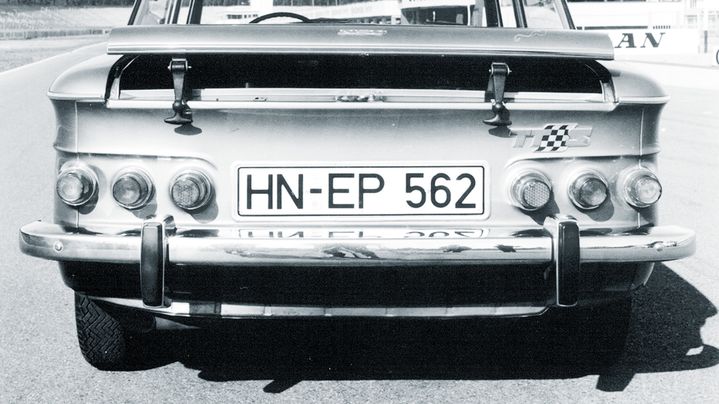
1908–1968: The success of NSU
NSU was already making a name for itself in motorsport in the early twentieth century. By 1967, the brand had scored notable race victories at motorcycle and automobile races.
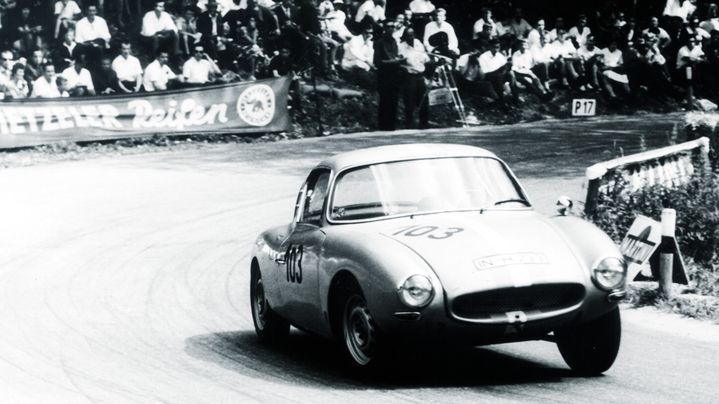
1929–1964: DKW in racing
DKW, founded by Jörgen Skafte Rasmussen in Zschopau, contested races successfully with two-stroke motorcycles from 1921. DKW touring cars began their motorsport career in 1929.
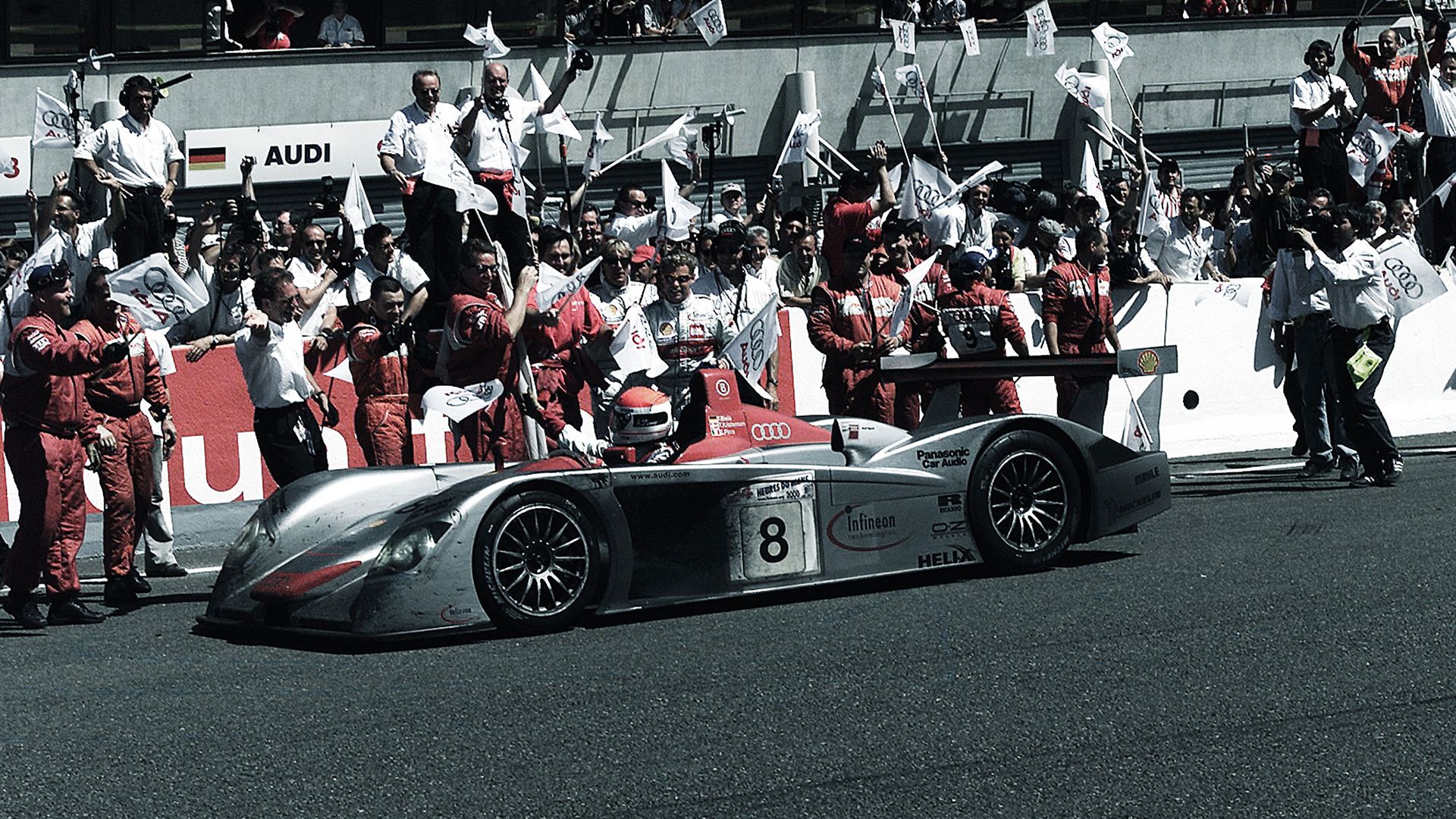
Racing history
1999–today: Beginning of the new millennium
With the entry of Le Mans prototypes in 1999 and into the DTM in 2004, Audi began an exceptionally successful era with the most superior racing cars of their time.
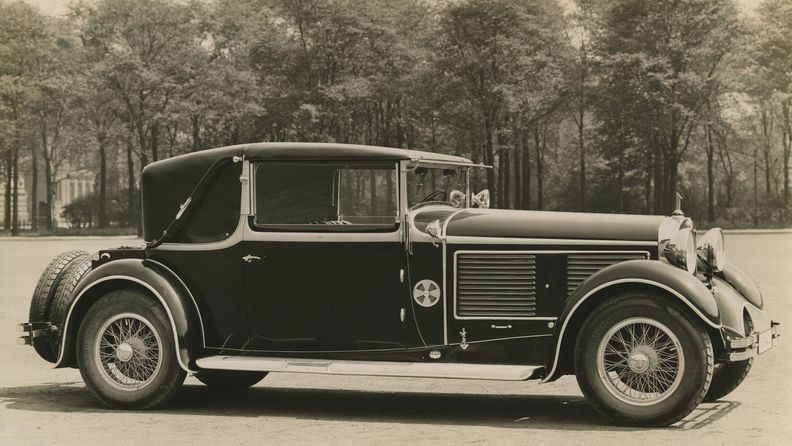
The history of AUDI AG dates back to the 19th century. Learn more about the great personalities from over 100 years of the brand’s history.
Audi worldwide
Models, products and services – switch to your country / sales region website and discover the regional diversity of Audi.
Your country / sales region
You are using an unsupported browser to access this website. To get the best User-Experience while visiting the website, please use the latest versions of Chrome, Firefox, Safari or Edge. Thank you very much for your visit. Your Audi Team
The international Audi website
Discover Audi as a brand, company and employer on our international website. Experience our vision of mobility and let yourself be inspired.
Audi of America: models, products and services
Explore the full lineup of SUVs, sedans, e-tron models & more. Build your own, search inventory and explore current special offers.
Error report
The feedback form is currently unavailable. Please try again later.
You may deactivate your ad blocker to view the feedback form.
Join the Family
Sign up to receive the weekly newsletter featuring the very latest from Petrolicious. Don’t be left out—join the ranks of those who Drive Tastefully.
Already a member? Log in
How was the drive?
We're glad you're back.
Not a member yet? Sign up
Reset Your Password
We'll get you back on track.

This Globetrotting Audi 200 Quattro Was Hannu Mikkola’s—And Audi’s—Final WRC Podium Finisher

Photography by Robb Pritchard Event images c/o Wolf-Dieter Ihle

Mikkola began driving competitively in his native Finland in the early 1960s, winning his first event of record in 1966 at the wheel of a Volvo 122. He later came to prominence and gained major manufacturer attention in 1970, in part for winning the five-week, 16,000-mile rally from London to Mexico World Cup Rally at the wheel of a Ford Escort 1850 GT, with co-driver Gunnar Palm. Throughout the rest of the decade, Mikkola drove an eclectic mix of Fords, Volvos, Peugeots, and Toyotas, and officially started his WRC career in 1973. Mikkola earned his first world rally victory at the 1974 1000 Lakes Rally, an event he would go on to win seven times (a record he holds with Marcus Gronholm).
In 1979, again at the wheel of a Ford Escort, Mikkola came to within a single point of the the first official WRC drivers’ title, finishing behind his friend Björn Waldegård. Although successful in Fords, it was ultimately Mikkola’s time with Audi in the 1980s that places him among the sport’s all-time talents.
With its four-wheel drive system and turbocharged engines, the Quattro completely rewrote the rulebook on how to win, inciting the biggest paradigm shift in rally history by proving what could be done with four driven wheels. It wasn’t an overnight success for the then still small German manufacturer, and in the early years the Quattros were plagued by reliability issues. The sheer capability of the cars were still enough for the Audi Sport team to win its first constructors’ title in 1982, and its second and final in 1984.

The 1983 season marked the last time any constructor would win the championship with a rear-wheel drive car (Lancia with its 037), but is was also to be Mikkola’s year as a driver. With four wins and three second places for Audi, he took the 1983 drivers’ title with a 23-point margin over second-place finisher and future teammate Walter Röhrl. The following year, Mikkola finished second in the final standings behind teammate Stig Blomqvist, but from that season onward, the dominance that Audi had snatched up early was reined in. The short wheelbase Sport Quattro that debuted late in 1984—and its evolved be-winged, fire-spitting S1 E2 variant—just didn’t have the same competitive edge the mid-engined Peugeot 205 T16 the Lancia S4.
Following the deaths of spectators and participants during the truncated 1986 season, the 1987 brought sweeping changes to the WRC by getting rid of the dangerously fast and lightweight Group B cars, putting a revised set of Group A regulations at the forefront instead. Based on mass-produced cars rather than quasi-prototype homologation specials, the Group A cars weren’t as exciting in a vacuum, but the competition and manufacturer support were consistently strong during their time.

Compared to the peerless Lancia Deltas that positively took over the 1987 season, the Audi 200 Quattro was overweight and ungainly. The Audi Sport team won just one rally all season with the car—which would also prove to be their last in the WRC in general—but it was a special one.
The Safari Rally in Kenya is held on open roads over vast distances, and on the toughest terrain the WRC has ever seen. It has always been an event unlike any other on the calendar, and is always a battle of attrition first and foremost. Compared to its lighter and nimbler competition, the relatively tank-like 200 found its strong suits played to in Kenya. With Mikkola’s expert ability to know when and how much to push while still looking after the car, he and the Audi proved to be a winning combination. This last win of his took his total tally to 18, one more than compatriot Markku Alén at the time, making Mikkola the winningest driver in WRC history… until Alén won two more events the following year. But nigh on 35 years later, Mikkola is still in the Top 10 list of WRC drivers with the most rally wins.

Second only to the Safari Rally as the toughest event on the WRC calendar, the 1987 Acropolis Rally in Greece was as much a car-breaker as it’s been any other year. And when attrition was an issue, Audi, in their big but strong 200, rose to the front. In the heat, rocks and dust, all of the two-wheel drive cars from Renault and VW struck trouble, as did a couple of the all-conquering Lancias, leaving Mikkola to pick up the last podium spot behind 1987’s title protagonists Markku Alén and Juha Kankkunen. And this is the car, part of Wolf-Dieter Ihle’s collection (which includes the previously featured 1984 Dakar Porsche 953 , and twin-engined Pikes Peak VW Golf ).

While this car was part of Audi’s last rally podium, the very last points for the manufacturer in the WRC came courtesy of Per Eklund’s fourth-place in the 1000 Lakes, and David Llewellin’s sixth-place in the season-ending RAC (that car can be seen its Gemini livery alongside Mikkola car below). Although they were both privateer teams, they helped Audi finish second in the season, although a very long way behind Lancia.
Mikkola spent the next few years with an uncompetitive Mazda, but never saw the podium again. In his later years he was a regular and popular fixture on the classic rallying circuit, driving his cars from seasons past, as well as many others that took his fancy.
The Safari Rally-winning car, Audi’s last WRC victor, was retained for posterity by the factory, but the Acropolis car that saw the last podium wasn’t afforded as much reverence, and over the next couple of years competed intensely with privateer teams, often shipped around the world for a diverse set of events.
Run by the Austrian MIG Linz team, and driven by Georg Fischer , a triple Austrian rally champion, the car was entered in a number of Austrian, European, and World Championship rallies, including the Olympus Rally in America, where Fischer netted an impressive fourth overall, as well as the Argentina Rally, which resulted in a DNF.
The following year, the car was rented by a Swedish VW/Audi importer and driven by none other than Stig Blomqvist, who was the first seed for the Swedish Rally, finishing fifth, before Fischer took it back for rounds in Portugal and Argentina, where he finished a creditable fourth overall in both. It was then shipped to India for the Himalayan Rally, where Fischer took second.

In 1990 the Audi was given a bit of a break when it was relegated to being the reserve car to Fischer’s new one, but in 1991 the MIG Linz team called it up again, entering it in the Dubai Rally, where it was driven by Raphael Sperrer, and then, the following year, in the Castrol Rally of South Africa with Ernest Loidl at the wheel, meaning that by the time the car was just three years old it had competed in Europe, North and South America, Asia, and Africa.
Raphael Sperrer was impressed enough with his experience in the car that at the end of 1994 he bought it and ran Walter Röhrl under the Sperrer Motor Sports banner as the zero car on an Austrian rally championship round. They kept it until 2007, when the new owner, a big Audi fan, put it in the old HB livery and added a bull bar at the front to make it look like the Safari-winning car.
It came to Wolf-Dieter Ihle’s collection in 2013, and in the time since he’s quickly brought it back to its original Acropolis spec. A collector of German rally cars, Ihle knows a thing or two about putting historical cars back into their original configurations. “I have some Group B Audis, so compared to searching for a 20-valve aluminum cylinder head for an E1, anything for a Group A car that was much closer to a road car, seems very easy!”
Another bonus was that although the MIG Linz team has rallied the car extensively, they had kept all of the original works Audi parts th at had come off it, and they survived the subsequent 30 years. “I am glad that it came with the original fuel tank,” Ihle remarked, “the Group A ones are actually very specific and are impossible to find.”

As you can probably imagine, driving a full-blooded Group B-era Quattro anywhere close to its proper operation window is a task suited only to the world’s best or bravest drivers, so the Group A-spec 200 Quattro is much easier to handle as you approach its limit, especially so because of its long wheelbase. But although the Group A cars had strict homologation rules in an attempt to keep them resembling their road-going counterparts, parts like gearboxes and suspension were allowed to be upgraded to better endure the rigors of stage rallying, so the shocks, springs and parts of the drivetrain are shared with the Group B cars—Wolf-Dieter thinks it handles better than one would think.
And although the 200 looks a lot bigger and heavier than the Sport Quattro that preceded it, it’s actually less than 200kg heavier… but with less than half the horsepower it’s certainly not the thoroughbred that its ancestor was. So much so that Wolf-Dieter has nicknamed this car “the Taxi”!
Since 1987 the works Audi Sport team has been absent from rally stages, but the four-wheel drive masters have seemingly been at the forefront of every championship and contest they’ve ever entered at one point or another. From Pikes Peak, the TransAm series in the late 1980s, the IMSA GTO championship, the early 1990s domination of the DTM, titles in several different touring car series, and of course the most incredible of all, 13 wins at the 24 Hours of Le Mans. And the very first piece of silverware from that now dynastic collection came when Mikkola won the 1982 Swedish Rally in an Audi Quattro.

The Jack in the Box mystery ingredient is an essential combination of ketchup, mustard, mayonnaise, A1 steak sauce, Worcestershire sauce, and a scramble of hot sauce. Jack in the Box delivers an excellent menu for breakfast during their breakfast hours. Kindly check their breakfast hours https://bit.ly/33BDrJd
Petrolicious Newsletter
Petrolicious.
- Privacy Policy
- Terms and Conditions
duPont REGISTRY Group
- Sotheby’s Motorsport
- FerrariChat
- duPont REGISTRY
- Ferrarichat
Be the first to know about new listings!
The WRC years: the birth of quattro
We discover how audi pushed the limits to develop quattro four-wheel drive for huge rallying and commercial success.
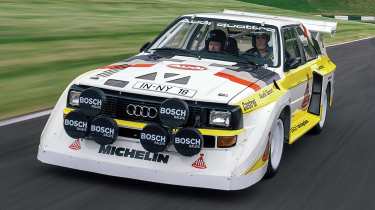
It's a well told story, but not without good reason. Before the Audi quattro, four-wheel drive was for farmers. After it, to turn up to a rally without four driven wheels was to admit defeat even before the flag had fallen to commence the opening stage. When Audi introduced the quattro for the first round of the 1981 World Rally Championship, at the Monte Carlo rally no less, it not only began a new era for itself as a company, but also for the world of performance cars and the sport of rallying.
A four-wheel-drive Audi road car was originally proposed by engineer Jörg Bensinger in the late 1970s, during development of the IItis military vehicle for Volkswagen. The idea was enthusiastically championed by newly appointed Audi boss Ferdinand Piëch as a way of establishing the marque alongside tough German opposition in the market – the original Vorsprung durch Technik. WRC regulations of the time forbade the use of four-wheel drive, but when the other participating manufacturers agreed to relax those rules they had no idea that Audi had been working away behind the scenes on a muscular, turbocharged, four-wheel-drive super-coupe.

The resulting Audi quattro – known as the Ur-quattro, ‘Ur’ being ‘original’ in German – was unveiled at the 1980 Geneva motor show, ahead of the model’s debut for the 1981 rally season. Originally conceived as a true ‘homologation special’, demand soon evolved it into a flagship of the Audi range, and it would eventually be on sale for 11 years, selling over 11,000 units.
The quattro was unique. It combined the sleek lines of the 80-based GT coupe with 2.1-litre five-cylinder turbo power and the new four-wheel-drive system, all topped off with blistered wheelarches, a deep front air dam and a boxy rear wing. With 197bhp and superb traction, it brought a new level of all-weather performance to road cars. To drive one today, like this very early Helios Blue Metallic 10-valve example from 1982, is a revelation. The engine has that wonderful off-beat signature sound and pulls very lustily in the mid-range, imparting a surprising sense of speed. It’s not as understeer-prone as you might fear, instead majoring on traction with surprisingly deft steering. It still feels capable; over 40 years ago it must have felt ballistic.
Not only was Audi prepared to push the limits and go its own way on the technical front, it also blazed a trail with its driving squad, not only recruiting established star Hannu Mikkola, but then teaming him with Michèle Mouton and co-driver Fabrizia Pons as an all-female crew for the second entry. Three victories were recorded in that debut season (two for Mikkola, one to Mouton), but it was Mouton who would so nearly capture the championship the following season, just losing out to Opel’s Walter Röhrl.

For 1983, Audi homologated into the new Group B formula, renaming the rally car the quattro A1. This was replaced by the A2 later the same season, a marginally smaller engine displacement on the revised road car meaning that Audi could enter the rally version in a lower weight category. The A2 enabled Mikkola to become World Champion after a tense battle with the works Lancia squad. Audi followed up its triumph with another driver’s crown in 1984, this time with Stig Blomqvist at the wheel, but by now the A2 was showing its age in a field that consisted of purpose-built supercars. Something new from Ingolstadt was needed.
Revolution came in the form of the Sport quattro, one of the most extreme homologation specials ever created. The aim was to make the quattro more agile on the stages, for Piëch insisted that Audi stick with a production-based entry. Some 32cm was chopped from the wheelbase, producing the truncated, hugely potent-looking beast you see here in Tornado Red. With 302bhp courtesy of a bigger turbo and a new 20-valve engine it was surely one of the quickest vehicles on the road in 1984 – and it still feels mightily rapid now. In rallying trim, the Sport was soon offering 500bhp, but while its power was exceptional, it was always something of a blunt instrument. To unlock its potential, Audi Sport went radical – so radical that it created one of the most unique, terrifying and beloved competition vehicles ever seen: the Sport quattro S1 E2.
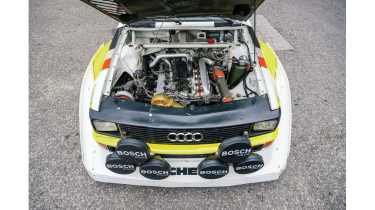
No one really knows how much power the E2 made, but even today at Cadwell Park, on its lowest boost setting, it should be 500bhp, which in a car that weighs not much over a ton feels utterly outrageous. By moving some of the weight rearwards, and embracing aerodynamics, Audi Sport moved back to the front of Group B rallying, famously winning the 1985 San Remo round with Walter Röhrl and co-driver Christian Geistdörfer. What an honour even to sit in this driving seat, yet alone to run the engine to 9000rpm, the scream of the five-cylinder engine and urgent surge of acceleration leaving me completely frazzled after just a handful of laps.
There will never be another car like this, but for Audi Sport, one era was closing and another opportunity beckoned: next, it would hit the track.
Most Popular

Volkswagen Arteon R Shooting Brake Fast Fleet test – 5000 miles in the 316bhp estate

Best superminis 2024 – our favourite small hot hatchbacks
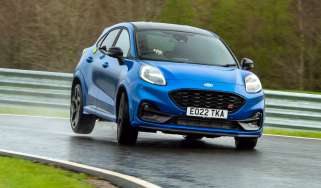
Ford Puma ST Fast Fleet test – 12,000 miles in the 200bhp crossover
- TUNING NEWS
- CLASSIC TEST
- MODERN TEST

Hannu Mikkola’s safari rally 1987 Audi 200 Quattro C3 Group A in Kenya
Hannu Mikkola in Kenya Safari Rally reunion with his Audi 200 Quattro
Last time I met Hannu Mikkola was in the Southern Hemisphere, and here we are again. Kenya this time, rather than Patagonia and fewer flights to get here, though the one from Nairobi in a tiny Cessna isn’t one I’ll forget in a hurry. Still, when you’re invited to share a car with a legend such as Hannu, crossing the globe is no big deal. Rally drivers get around. Always have. Even retired ones.
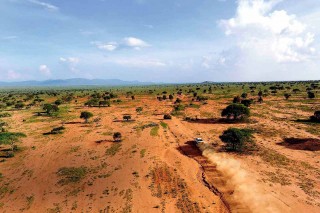
He takes the front seat next to young Curtis the pilot, who is courteous and polite. Turns out Mikkola’s a slightly nervous passenger, somewhat wary of certain fixtures and fittings that might not have passed scrutineering in his game. I can’t afford to be a nervous passenger, either now or later, so I occupy my mind with the view over dusty, red plains, circular Maasai villages, and the looming hulk of Mount Kilimanjaro. Journeys are rarely as startling as this, visually or otherwise. Same goes for the destination: the Taita Hills, which erupt from the plain in the south-east of Kenya, just 3º south of the Equator.
We’ll come back to the destination later. What about the occasion? Well, it’s 30 years since Mikkola’s last WRC victory. It was with Audi, in the 1987 East Africa Safari Rally. And the car’s here too, that very same Group A Audi 200. You know, the big executive saloon. The aerodynamic one. Famed for thrusting bosses along the autobahn between high-powered meetings, its Quattro four-wheel drive and lusty turbo five-cylinder perfect for dismissing distance in all weathers. Ideal, too, for the dusty plains of the Savanna. And all the other wildly varying terrains of this vivid country.
‘It was a big shock for everyone, coming to Group A from Group b. After Group b, you just had to remember that the other cars had less power, too. I’ve competed in cars from 60bhp to 550bhp; it’s always just as difficult to win,’ says Hannu. ‘With less power, the hard part is to keep the car going. With a powerful car, you drive more with the throttle. With less power, you don’t have that option. If the brake balance is right, you play with that and you get into a rhythm. You brake to get the back end up. It comes without thinking, really.’
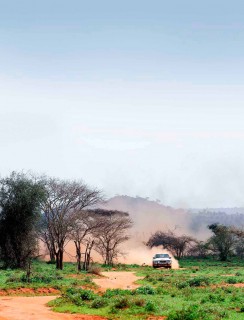
A masterclass from the 1983 Group b champ. Only in 1987, Group b was no more. The era of the fire-breathing rally cars had come to an end after too many deaths – drivers, co-drivers and spectators – and concerns that safety considerations were being overridden by the desire to win. Audi had withdrawn before the FIA intervened, and Hannu hadn’t competed in a rally for more than a year when, together with Arne Hertz – the co-driver he’d shared cars with since 1977 – and still with the Audi team, he made his comeback in Group A.
Yet why, when Audi had come so far with the coupé Quattro, did it turn to the 200 saloon? Also here in Kenya is Dieter Basche, former racing driver and head of Audi Sport during the Group A years. ‘We had Group A Quattros, though they were not homologated with a turbo. The 200 was, so it was an easy decision. Sure, it was a big four-door, but everybody within Audi loved it as a road car, and we hoped that would help.’
‘It’s bigger so it’s less nervous, it doesn’t twist so quickly, it accelerates less hard and so you don’t need to steer so much,’ adds Hannu. ‘If a car looks right, it’s often good to drive too. I have lots of good memories of the 200; I drove it in three rallies, and finished third or fourth in Greece. I crashed it in Finland…’
‘We had so much experience in developing Group B, which had more power and higher speeds. It made our jobs a lot easier for Group A,’ says Dieter. ‘We were confident we could make a good car of the 200. But the challenge to the suspension was the same. With less power, the car has to handle even better if it’s not to lose time. Throughout Group B there was a steep learning curve of development, and a team of 60-80 people rather than the 12 or so we’d have had in the 1970s. By 1987 there were 200 people in Audi Sport, working across three different projects. They would organise local people for servicing and back-up trucks. They knew best.’
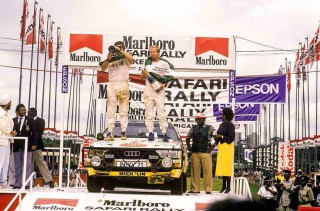
Of course, Audi built more than one 200 rally car, although this one – which survived its victory on the 1987 Safari – is the only one still with the company. ‘We had a car that could win the Monte, we had a car that could win the Safari,’ says Dieter. ‘For the Safari, the structure was reinforced, and we had special spring and damper settings. We added material in crucial areas – you had to follow the original shape and dimensions. Thickness was limited; we had to weld sheet metal into places such as the front suspension mounts, subframes and firewall. We raised the car 20-25mm on longer springs and spacers, and we fitted progressive springs at the front. There were tougher wishbones at the back, too. The front struts have altered geometry, reinforced seals and a range of temper settings from Boge, because of the temperatures.’
The strengthening aspect was extremely difficult for Audi philosophically because it added weight. ‘The aim for road cars was efficient aerodynamics and saving weight. That’s not what this was about!’ says Dieter. ‘Normally you work out where to add strength and where to take away weight. Here the first aim was to go the distance without a problem. And you have to consider safety. Once we tried to use aluminium for the rollcage, reducing the weight higher up where it makes the most difference. But people have to be safe inside the car. We went back to steel…’
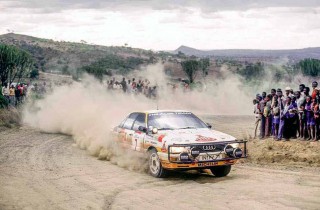
Clockwise from left 30 years on, kicking up a dust-storm in the Maasai Mara; Hannu Mikkola and co-driver Arne Hertz, triumphant in 1987; on their way to victory.
Audi was very sensitive to that aspect, especially considering the price Group B had levied in so many cases. And with the main aim being to last the distance, the Safari car carried extra equipment that wasn’t required on other rallies: ‘There’s a bull-bar at the front and a 200-litre fuel tank – it’s normally 120 litres; the stages here are much longer than most. There’s extra lighting too. At night, in Kenya, it really goes dark.’
A special heavyweight jack was signed off only when Hannu suffered a puncture during practice and left the tyre-changing to Dieter. ‘The lightweight jack just wouldn’t lift the car off the mud!’ he smiles, exchanging a wry look with Hannu.
Our conversation takes place at a lodge a few miles from the town of voi, along a ridge just south of the Taita Hills, which conceal one of this giant continent’s few remaining unspoilt areas of rain forest. The view is one of the most panoramic in Africa, stretching miles across the plain. On the western horizon, Kilimanjaro’s snowcap peeks above the haze. The springtime rains have come early, so there’s much greenery in evidence, but still the red earth dominates. Wildlife is in abundance. Between the airstrip and here – just a couple of miles – we’ve seen elephants, antelope, zebra and buffalo. Lions, it’s reckoned, prowl through the grounds of the lodge at night. Maasai herdsmen can be seen with their nomadic cows. screaming, snarling, sideways rally cars are furthest from your mind in a place like this.
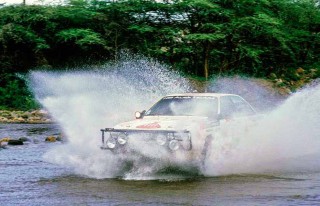
Above and below Maasai tribesmen were clearly elated to see Hannu and the Audi; quickest way to cross a river, back in 1987.
Hannu breaks our reverie: ‘The safari rally was the most varied of the WRC events, long and high-speed. normal traffic was a problem, there was lots of dust and broken-down cars were left everywhere. in the lead you didn’t feel tired. But if you dropped back you’d feel it. and then you had to motivate yourself to fight back.’ it was one of the trickiest too. ‘in 1987 less than half the field finished. They didn’t cancel any stages; if there was flooding, you just had to get through or go round. it can take seven hours to get to the other side of a swollen river.’
The 1987 safari rally was the first endurance event to be held under the new Group a rules, and Audi became only the second non-Japanese manufacturer to win it in a nine-year period. Hannu had won the event in a Ford escort back in 1972, the first non-African to do so. in 1987, he beat by some distance his team-mate Walter Röhrl, making for an Audi one-two – and Audi’s first win since Sanremo in 1985. it was a Gruelling seven-day rally, covering 2491 miles over every imaginable terrain, with 958 miles on competitive sections, all on unsurfaced roads that remained open to traffic; 26 controls were visited in darkness.
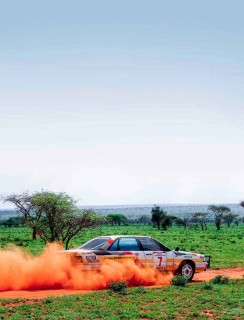
Hannu quickly took over from Stig Blomqvist’s early lead. The swede was unwell, taking part in a local car commandeered by the Ford team after his own was crashed before the start. and as was so often the case, Japanese cars were soon vying for supremacy, particularly Björn Waldegård in his Toyota supra.
Says Hannu: ‘I thought Toyota was our main competitor but they weren’t any faster than we were. i was quite surprised. Toyota had spent a lot of time concentrating on the safari rally and won it many times.’ trouble struck, though, when an engine problem cost Hannu time and two positions, dropping him back to third. ‘a turbo pipe fractured,’ he says. ‘We got it fixed and it increased our speed quite a lot. We had two punctures too, but we just drove faster than before. We weren’t far behind, just 12 seconds by Nairobi. Then Toyota couldn’t get a driveshaft off and my service went well. suddenly I was leading again.’
Service teams weren’t always on hand either, due to the great distances covered on each stage. ‘Arne and myself once stopped to plug the radiators. We had front suspension problems, electrical problems. But we were lucky to have service in the right places. You can be lucky – and we were – but you will have problems, that’s for sure.’
Unusually, Dieter was there for the 1987 event, too. ‘We had radio contact,’ says Hannu. ‘I’d lost some speed. So I read the gauges, fed the information back to Dieter. They concluded it was a turbo pipe.’
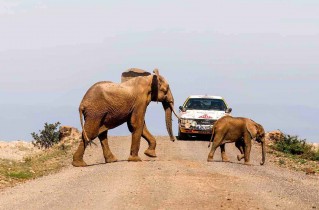
Dieter interjects: ‘I tried to catch as many service points as possible, usually one or two every day. I remember a service where we changed the shock absorbers – we hadn’t found a way to make them last the distance – and it went better than when we’d ever done it before. Everything went to schedule. But much of it is down to luck. You get one stone stuck in the wrong place and you service the car with a hacksaw, not a spanner.’ Of course, as the head of Audi Sport, Dieter couldn’t be on hand in all rallies.
‘I couldn’t always be there – I had to be developing the next car. Jörg Bensinger [the man credited with the idea for developing the Quattro system for Audi’s road and rally cars] said I should be there, and I didn’t always like it. But it was a good opportunity to be closer to the competition and I gained much experience from it. And nowhere is more difficult than Kenya.’
We’ve crossed the landscape in a convoy of Land cruisers, clambering down the rocky road from the lodge. Here, sitting in the midst of the red plain we were looking across, is the 200. Hannu was ahead of us, and has already taken his sighting laps. It’s an area that held an official stage towards the end of the 1987 event but such are the tracks criss-crossing the dusty earth that it would be foolish to ask Hannu if he ‘remembers these roads’. In fact, his sighting laps have familiarised him with a 12km stretch. As I’m about to find out, knowing where to turn out here, with only trees as landmarks and no signage, is a skill as valuable as car control.

Hannu’s already strapped in and I scrabble over the rollcage into the passenger seat. No racesuits today, as the temperature’s a heady 32ºc outside and it’s way hotter in here: the Audi 200 always was known for cooking its occupants under that flush glazing. We’re in helmets though, with proper rally intercom, and tightly strapped into five-point harnesses.
There’s dust everywhere, a red layer you could leave finger trails in on every surface: a corollary of those sighting laps with the windows down. ‘On the rally, we closed everything and ran the fans, so the air pressure inside was higher than outside,’ he says, then cranks that turbo five into life. There’s the familiar warble, Hannu grabs first (it’s a conventional ’box, straight from the road car) and we topple along the grassy tufts and make for the track. Then he accelerates.
That warble builds to the familiar buffalo-bellow, and there’s a hint of turbo-whistle too, yet it’s all strangely undramatic. The ride smooths out until it feels like a jet plane through turbulence, and the pace builds strongly, but not savagely. A couple of trees make for an impromptu chicane and I brace my feet in the footwell: Hannu doesn’t brake, he simply flicks right to unsettle the tail, then left into the chicane, right again through it and left out of it, the tail plotting our course more than the wheel. It’s very different to last time: a 360bhp Group B Quattro A2 on Patagonian tarmac is so much more visceral an experience than this, but that’s the difference between Group B and Group A, I guess. The 200 has 240bhp. And a surface you can slide across rather than thru-ppeny-bit your way over with every change in vector.
‘On the Safari there’s different grip, different driving styles, from one stage to the next. It’s loose here, like driving on ice. Very different from asphalt,’ says Hannu, grabbing his breath between shocks from the rutted surface. Suddenly, he hangs a left and I can see the track spearing towards the horizon: long, straight, relatively free of obstacles. I’d seen the red rooster tail he created on his practice lap earlier; now it’s building behind us as Hannu makes his way back up from a snatched downshift into second, and we find ourselves in fourth, closing in on the rev limiter and into fifth as the Audi reaches the kind of speeds executives might once have enjoyed in one on the autobahn. Only we couldn’t be further from an autobahn.

Clockwise from top left Elephants are less of a hazard now than 30 years ago; Octane’s Glen Waddington strapped in for a thrilling ride with Hannu Mikkola; stripped interior still recognisable; five-cylinder engine is 60bhp more powerful than the 180bhp road car’s.
The car’s stability is incredible, as is its feeling of utter integrity: those extra layers of steel clearly do their job, even 30 years on. And Hannu is utterly at home here, even in his mid-70s. Skills like these don’t simply disappear. Indeed, as he’d told me earlier: ‘I have never given thought to how I drive. It just comes. All my life, it just came by experience.’
All too soon, we can see again the crew in the distance as our 12km low-level flight comes to an end. One last blast through the gears, another chicane, then a right-left flick and we start to decelerate. It’s hot in the car, yet the atmosphere is relaxed. We’ve travelled at speeds that you’d normally suggest are unnatural over this terrain, yet in the 200 – and next to Hannu – they felt entirely appropriate. So I’m stirred, though not really shaken. As Dieter had said earlier: ‘The philosophy at Audi was to make the car as forgiving as possible. If the car is easy to control, you lose less concentration over a distance.’ Clearly, that’s important when you have 958 miles of special stage to cover. Flat-out.
Audi’s famous for, among other things, rally cars and executive saloons. Who would have thought the two could be combined to such brilliant effect.
TECHNICAL DATA FILE SPECIFICATIONS 1987 Audi 200 Quattro Group A C3
Engine 2144cc five-cylinder, OHC, Bosch KE-Jetronic fuel injection, KKK K26 turbocharger with intercooler
Power 240bhp @ 6000rpm / DIN
Torque 243lb ft @ 4000rpm / DIN
Transmission Five-speed manual, four-wheel drive
Steering Rack and pinion
Suspension Front: MacPherson struts, lower transverse arms, coil springs, telescopic dampers, anti-roll bar / Rear: Double wishbones, coil springs, telescopic dampers, anti-roll bar Brakes Vented discs.
Weight 1400kg
Top speed 130mph (est)
0-60mph 8.0sec (est)
‘SUCH ARE THE TRACKS CRISS-CROSSING THE DUSTY EARTH THAT IT WOULD BE FOOLISH TO ASK HANNU IF HE “REMEMBERS THESE ROADS”’
How useful was this post?
Click on a star to rate it!
Submit Rating
Average rating 4.6 / 5. Vote count: 8
No votes so far! Be the first to rate this post.
RECOMMEND BLOGS
Navigating financial highways: a guide to truck factoring for new trucking businesses, what is the aston martin in casino royale, bitcoincasino.us: a wide variety of casino games for btc users, windscreen tinting: benefits, maintenance, and legal considerations, follow us on, leave a reply cancel reply.
Log in to leave a comment
- Aston Martin
2024 Honda Prologue: What We Know So Far
5 most popular suv among famous stars and celebrities, drive-my.com, legal content.
- Terms and Conditions
- Privacy Policy
- Copyright Notice
Email: [email protected]
Drive-My.COM MEDIA EN/UK based is United Kingdom’s top cars/retro/classic/modern/tuning/moto/commercial news, test drive, classic cars and classifieds. For car advertisement be it an RETRO/CLASSIC/OLD-TIMER/NEW-TIMER, Coupe, MPV, SUV, Luxury Car, Commercial vehicle, OPC car or even an auction car. We update you with latest information on new car prices from both parallel importers and car authorised dealers with brands such as Aston-Martin, Bristol, TVR, Bentley, Ford, Porsche, Jaguar, Land Rover, Citroen, Tesla, DS, Alfa Romeo, Subaru, Toyota, Acura, Honda, Nissan, Audi, Kia, Hyundai, Volkswagen, Volvo, Mitsubishi, BMW, Mercedes-Benz. Find new car pricelists, new car promotions, new car reviews, latest car news, car reviews & car insurance UK. We are also your information hub for parking, road tax, car insurance and car loan, car audio, car performance parts, car discussion, motor insurance, car grooming, car rental, vehicle insurance, car insurance quotation, car accessories, car workshop, & car sticker, tuning, stance and Cars Clubs
All rights reserved © 2014-2021 Drive-MY

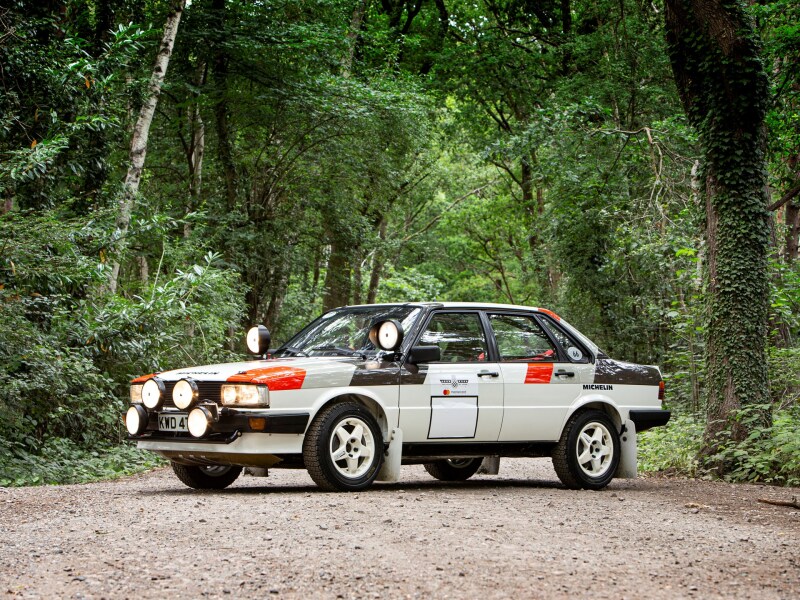
80 quattro Works Rally
Price upon request
International shipping available
Ships from: Chobham, United Kingdom
Taxes not included
VAT and other taxes are not reflected in the listed pricing. Read more
Description
Known history from new, first registered in 1983 by VAG UK in Milton Keynes
• Thought to be one of just four Works Audi 80 quattros built at Ingolstadt
• Originally built by Audi Sport Germany
• Fielded by Audi Sport UK and David Sutton Motorsport in the 1983 British Open Rally Championship in Group B
• Converted by Audi Sport in 1984 to “Safari-spec”, and entered in the 1984 WRC Safari Rally, where it finished 1st in class, and 10th overall in Group A
• Fielded in the 1985 WRC Safari Rally, where it retired whilst leading its class
• Purchased by the consignor in 2014; restored to an extremely high standard from 2015 to 2016
• Participated at the Goodwood Festival of Speed in 2017 and 2018, as well as Speed Machine in 2019
• Highly eligible for historic rally events including the Goodwood Festival of Speed, Rally Legends, and Slowly Sideways
• Accompanied by an impressive history file including FIA homologation papers and period photos, 1990 RAC Rally Pass, and restoration invoices
• Offered for £130,000 GBP
Announced in September 1978, the redesigned Audi 80 saloon began to reach European customers by October of that year. Based on the Volkswagen B2 platform, the body was penned by legendary automotive designer Giorgetto Giugiaro, who had previously designed cars such as the Alfa Romeo Alfasud, the De Tomaso Mangusta, and the Lotus Esprit. As part of a concerted effort to move upmarket, Audi intended for the 80 to compete directly with the BMW 3 Series in the compact executive saloon class.
Soon after the launch, Audi’s motorsport engineers turned their attention to the 80 platform, with a view to increasing performance and handling in order to participate in competition. Having already released the mesmerising four-wheel-drive Audi quattro B2—the all-conquering “Ur-quattro”, which shared the body shell and multiple components from the Coupé version of the Audi 80— the 80 line up became the first to receive Audi’s innovative four-wheel-drive technology. In 1983, Audi offered the 80 saloon in quattro specification, the top-of-the-range model further embellished by twin headlamps, a front spoiler with integrated fog lamps, a body-coloured rear spoiler, “quattro” script on the boot lid, and a twin-pipe exhaust.
On 2 March 1983, Audi Sport UK, in partnership with David Sutton Motorsport of Acton, London, announced that the Audi quattro and Audi 80 quattro would be entered in all rounds of the 1983 British Open Rally Championship. A copy of this press release is on file, with an image depicting three quattros and one quattro 80. The car offered here, chassis number 85DA126497, is the very example pictured in this 1983 Audi Sport press release.
Condition Report
German Cars
Conditions of Business
Please note that the cancellation right for EU/UK purchasers applies to this item. Please read Condition 19 of the Buy Now Marketplace Conditions of Business for buyers for more information. Read more here .
- Classic Driver
- Forgot password
- Newsletters
- Language English Deutsch
- Currency Select AUD CHF CNY DKK EUR GBP HKD INR JPY NZD SEK SGD USD
- Collectibles
- Real Estate
- CD Works Agency
- For sale CD Shop Magazine Auctions Sell
1983 Audi 80

- Year of manufacture 1983
- Car type Other
- Reference number PS00_r5505
- Condition Used
- Exterior colour Other
Description
- Known history from new, first registered in 1983 by VAG UK in Milton Keynes
- Thought to be one of just four Works Audi 80 quattros built at Ingolstadt
- Originally built by Audi Sport Germany
- Fielded by Audi Sport UK and David Sutton Motorsport in the 1983 British Open Rally Championship in Group B
- Converted by Audi Sport in 1984 to “Safari-spec”, and entered in the 1984 WRC Safari Rally, where it finished 1st in class, and 10th overall in Group A
- Fielded in the 1985 WRC Safari Rally, where it retired whilst leading its class
- Purchased by the consignor in 2014; restored to an extremely high standard from 2015 to 2016
- Participated at the Goodwood Festival of Speed in 2017 and 2018, as well as Speed Machine in 2019
- Highly eligible for historic rally events including the Goodwood Festival of Speed, Rally Legends, and Slowly Sideways
- Accompanied by an impressive history file including FIA homologation papers and period photos, 1990 RAC Rally Pass, and restoration invoices
Announced in September 1978, the redesigned Audi 80 saloon began to reach European customers by October of that year. Based on the Volkswagen B2 platform, the body was penned by legendary automotive designer Giorgetto Giugiaro, who had previously designed cars such as the Alfa Romeo Alfasud, the De Tomaso Mangusta, and the Lotus Esprit. As part of a concerted effort to move upmarket, Audi intended for the 80 to compete directly with the BMW 3 Series in the compact executive saloon class.
Soon after the launch, Audi’s motorsport engineers turned their attention to the 80 platform, with a view to increasing performance and handling in order to participate in competition. Having already released the mesmerising four-wheel-drive Audi quattro B2—the all-conquering “Ur-quattro”, which shared the body shell and multiple components from the Coupé version of the Audi 80— the 80 line up became the first to receive Audi’s innovative four-wheel-drive technology. In 1983, Audi offered the 80 saloon in quattro specification, the top-of-the-range model further embellished by twin headlamps, a front spoiler with integrated fog lamps, a body-coloured rear spoiler, “quattro” script on the boot lid, and a twin-pipe exhaust.
On 2 March 1983, Audi Sport UK, in partnership with David Sutton Motorsport of Acton, London, announced that the Audi quattro and Audi 80 quattro would be entered in all rounds of the 1983 British Open Rally Championship. A copy of this press release is on file, with an image depicting three quattros and one quattro 80. The car offered here, chassis number 85DA126497, is the very example pictured in this 1983 Audi Sport press release.
CHASSIS 85DA126497
Manufactured at the beginning of 1983, chassis 85DA126497 was assembled at Audi’s Ingolstadt factory with the assistance of David Sutton Motorsport. It should be noted, that as an Audi Sport Works car, Matter-built bodies with significant reinforcements over a standard shell were supplied. In addition to the specialist body, the car featured a four-cylinder, 2.1-litre Group A quattro engine, further to suspension and other mechanical components—specifically made for Works cars—designated as Group B parts. The use of both Group A and B mechanicals resulted in the accompanying homologation papers classifying this example as “Group A/B”. The vehicle was purchased new by VAG UK of Milton Keynes, and first registered in early 1983 by Sutton Motorsport with the Isle of Man registration number “VMN 44”.
Shortly after its arrival in the United Kingdom, VMN 44 was entered into the Mintex International Rally in York, England. Numbered “6” and driven by Harald Demuth and Mike Greasley, the Audi 80 quattro performed well on its debut, finishing 5th overall and 4th in class B. Two months later, on 1 April 1983, the Audi made its way across the Irish sea to race at the Rothmans Circuit of Ireland. Driven again by Demuth and Greasley, the pair worked their way up from 10th to 6th overall by the fourth leg of the five-day rally. Unfortunately, towards the end of the fourth leg, at 27 km, the pair crashed at Taylors Hill, resulting in an early retirement.
Repaired after the incident in Ireland, the 80 quattro returned to Great Britain, ahead of being entered in the Castrol International Welsh Rally from 6 to 8 May 1983, racing at Builth & Llandrindod Wells on gravel and asphalt surfaces. Wearing number “15”, this Audi featured a revised driver line up, with Darryl Weidner replacing Demuth, sitting alongside Greasley. The duo fared well over the three days, moving up the table from 19th to 11th overall, finishing 5th in Group B. Demuth returned as the main driver for the Ulster Rally on 29 July 1983 for what would be the penultimate outing in of the year, though he and co-driver Arwed Fischer were unable to continue the Audi’s run of form, with an engine failure resulting in early retirement. The car was later registered in the United Kingdom by VAG UK, being issued with the registration number “A180 UNH” on 14 October 1983.
The final rally of 1983 was at the Audi Sport National Rally in Aberystwyth, Wales, on 15 October, an event that highlighted the competitive nature of the 80 quattro. Piloted by Francis Tuthill and Roger Freeman, the pair stormed their way up the rankings, charging from 25th in the first stage to 13th overall, ultimately finishing 1st in Class 3. Digitised period footage from the 1983 season can be found on file.
For 1984, the story of this rare Audi 80 quattro takes an interesting turn. Prepared either by Sutton Motorsport or Audi Sport Germany, the car was converted to “Safari-spec”, before entered in the 1984 Safari Rally. Piloted by Basil Critcos, alongside co-driver John Rose, the Audi was campaigned wearing the Kenyan registration plate “KWD 473”. After leasing the car from VAG UK, Critcos became the second owner of the 80 quattro. He received factory support from Audi while he raced in Kenya, as it was an official Audi Sport entry.
This Audi made its African debut in Nairobi, Kenya at the 1984 Marlboro Safari Rally on 19 April. Assigned race number “28”, Critcos and Rose campaigned hard in the only Audi 80 in a competitive class. After five intense days, the duo’s hard work and determination had paid off, with the car coming home 10th overall and 1st in the A8 class. Relative to its peers, the 80 quattro proved a hardy and consistent competitor, finishing 13 places ahead of the vehicle that finished 2nd in the A8 class.
Disappointingly, the duo’s success wasn’t to be repeated, with an abortive attempt at the 1985 Safari Rally resulting in early retirement. After the dust had settled, Critcos sent the Audi from Kenya back to the Audi UK to be re-prepared by Paul Ridgeway, a mechanic recommended to Critcos, used by both Audi UK and Sutton Motorsport. On 13 February 1986, Ridgeway registered the car in his name. He kept the Audi for three years, before it was bought by Chris Collins with the intention of contesting the 1989 Mintex Rally, as he had crashed his car in previous event. Following the rally, Collins sold the car to its fourth owner, Roy Gillingham of PIM Racing, on 26 May 1989. While uncovering the history of this vehicle, the current owner met Collins, who stated that the car performed exceptionally well in rough and slippery rally stages.
Gillingham’s first event in the 80 quattro was at the 1989 Shell Oils Cumbria Rally on 2 September 1989, which he entered with co-driver Stuart Larbey. Starting in 56th place, the duo climbed up the rankings over 120 km of loose surface stages to finish 48th overall, and 9th in the A8 Class. The car’s next outing was at the 1989 Lombard RAC Rally in Nottingham, England. Starting on 19 November, the punishing five-leg rally covered a total distance of 3,082 km. Gillingham and Larbey began the race in 52nd position, finishing 45th overall, and 20th in the A8 Class.
Following the end of the 1989 season, Gillingham decided to update the car by removing front and rear sections, replacing them with updated Audi 90 panels while the rest of the exterior was painted in white with red, grey and black. After completion, Gillingham registered the Audi with the RAC Motor Sports Association and applied for a Rally Special Stage Vehicle Log Book, which is included in the history file. Issued on 24 January 1990, this car was officially recognised as an Audi 90 quattro and entered its first and final event of that year—the 115 km Mazda Winter Rally. Numbered “57”, Gillingham and Stuart finished 26th overall, and 13th in their class. After the rally, Gillingham decided to field another one of his vehicles in future events, and placed the 80 quattro into long-term storage.
In 2014, while at a track day event, the current owner was informed of an ex-Works Audi 80 quattro that had remained in storage for 25 years. At the time it was thought that no ex-Works cars remained in the public sphere, but the soon-to-be owner went down to inspect Gillingham’s car and discovered that it in fact was a long-lost ex-Works Audi 80 quattro. Passionate about rally cars, he decided to purchase this rare Audi, knowing nothing about its past, but understanding that this vehicle was equipped with a significant number of rare Audi Sport Group A/B components found only on ex-Works vehicles. Discovering an example that retained so many of its Works components is highly unusual due to their rarity and value. So, Gillingham
More Listings related to Audi 80
Audi TT Safari Reimagines the Sports Coupe as a Rally Car
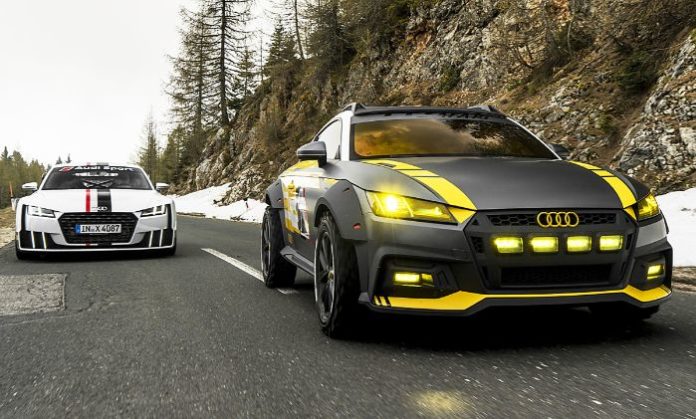
You’ll either love it or hate it. Either way, they made it.
Audi already killed off the TT for its next-gen vehicle line-up, so this is everything but a serious attempt to ramp up interest in the sports coupe. Instead, Audi let its trainees get practical and design and build this one-off off-road machine.
Audi TT Safari is inspired by the legendary Audi 200 Safari, which dominated 1987 WRC Safari Rally, winning 1st and 2nd place.
View this post on Instagram Audi TT Safari!?? Would you drive it?!? ? Follow @a1_garage for more! ? Thank you @viamontis! ? Link to my store in bio! ? A1 Partners: @gratr.motion @detachedgarage @menardpremiumdetailing A post shared by A1 Garage | Ryan M. (@a1_garage) on May 22, 2019 at 6:14am PDT
The rugged-looking TT will be making a debut at the 2019 GTI meetup at Wörthersee, Austria (29 May – 1 June), where thousands of VW enthusiasts flock up each year to share their passion.
The offroader is raised and equipped with a number of new body panels.
The front bumper is redesigned to incorporate a row of rally lights with additional lights integrated into the side vents down low. In the back, the dual exhaust is lifted higher and integrated into the rear bumper.
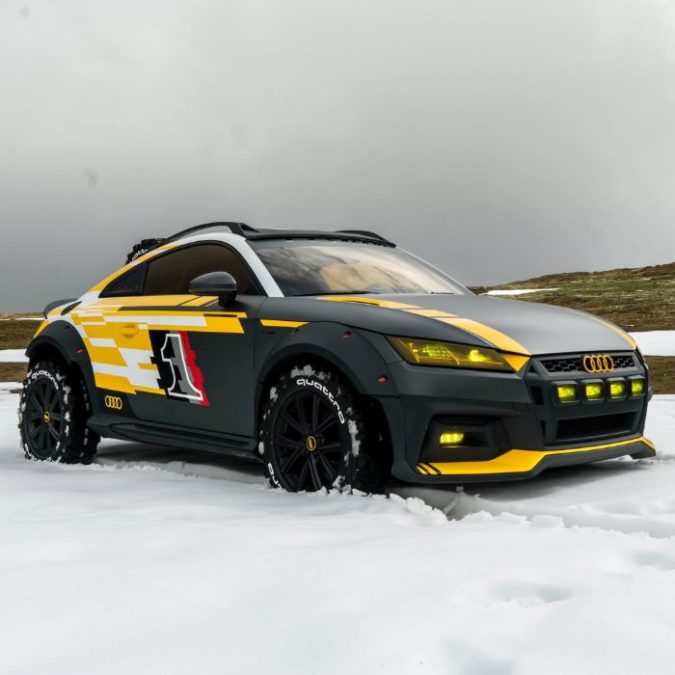
The rear spoiler, window, and trunk are removed. Instead, Audi’s trainees put a rack with two spare tires and a set of rails so you can still take some camping equipment with you in the bush.
A set of (impossible to miss) wheel arches cover the top of the tires, which stick halfway out of the original fenders.
Inside, the interior matches the paint job with yellow accents and stitching contrasting the grey base color. The steering wheel is borrowed from an R8 and also color-coded to match the style.
View this post on Instagram Werbung| Der Audi TT Safari auf der @xs_carnight #audi #tt #ttsafari #audittsafari #audipicture #audisport #audideutschland #wörthersee #wörthersee2019 #car #showcar #automotive A post shared by Niklas Trabert ?? (@audipicture__) on May 23, 2019 at 10:40am PDT
Under the radical body, you’ll find an RS powertrain. The turbocharged, 2.5-liter inline 5-cylinder engine produces 394 horsepower and 354 lbs-ft of torque. That’s handled by a 7-speed DSG transmission and delivered to all four wheels by Audi’s Quattro AWD system.
In combination with the massive 215/60R17 off-road tires, the TT Safari should really move some dirt and gravel under your butt.
We can’t hope this thing will last a full rally – there’s not even a roll cage in there. However, if there’s any Audi 200 DNA in it, it will at least perform reasonably on the trail. Fingers crossed for some offroad footage soon!
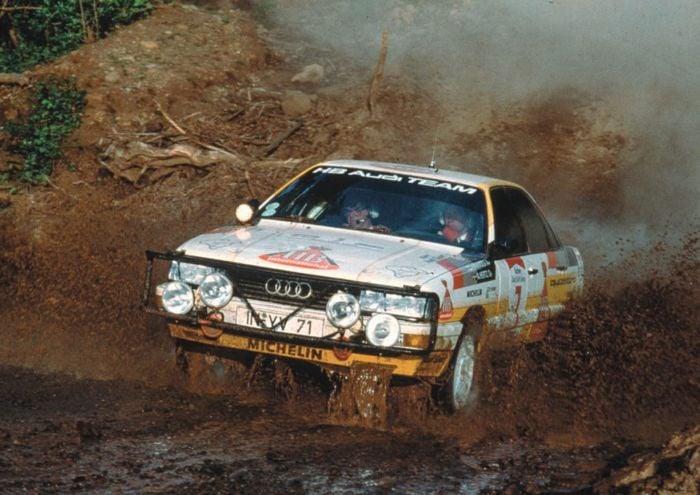
- Privacy Policy

Audi Quattro Sport

Model photos
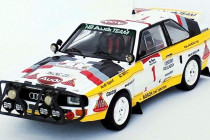
Model owned by
Model wanted by, model offered by, all models of audi quattro sport 1:43.
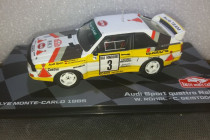

1987 Audi Sport Quattro: Rally Legend for $109,000
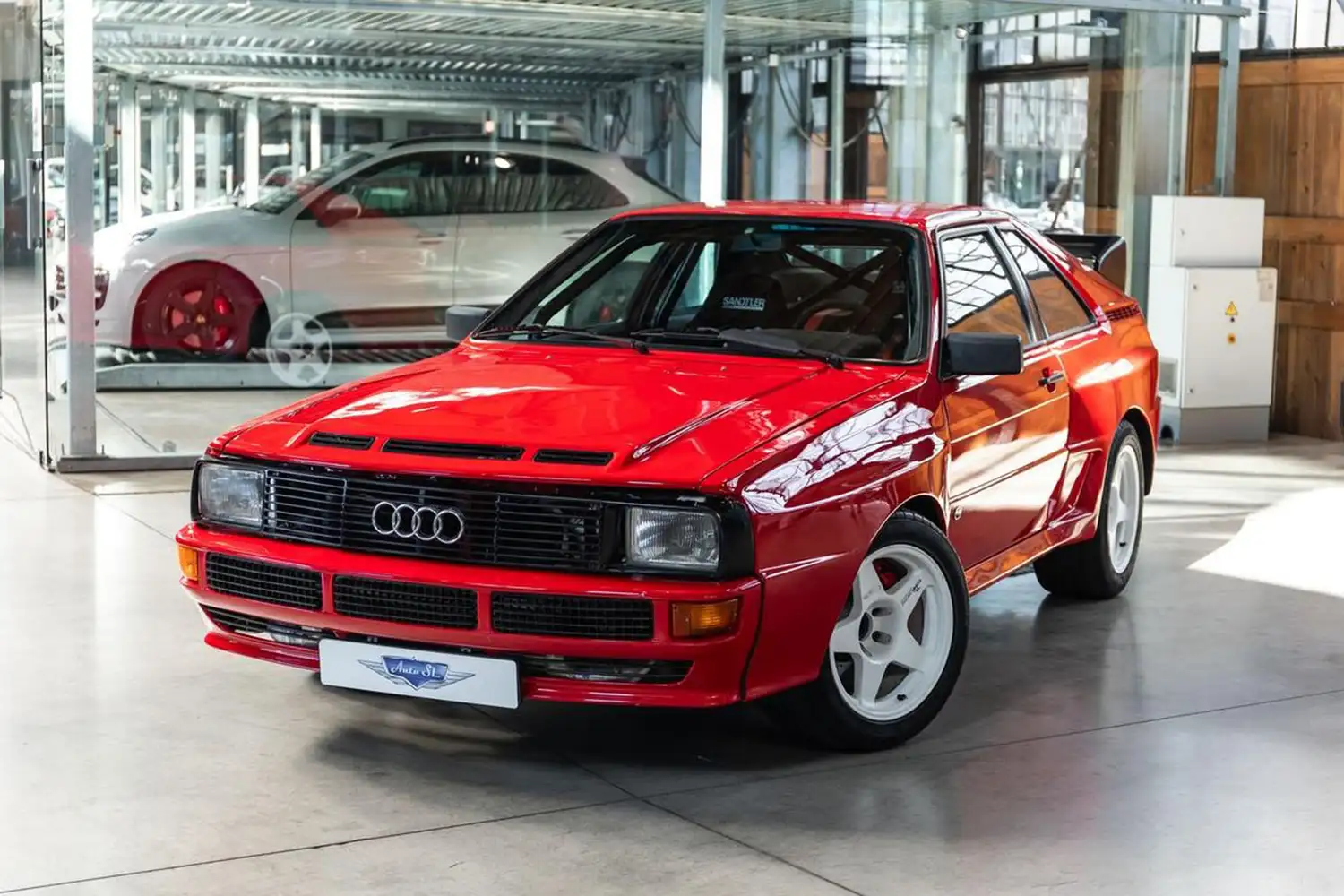
The 1987 Audi Sport Quattro stands as a pinnacle of automotive engineering and design. With only 220 units produced, and an additional 4 built from spare parts, this model represents a rare and coveted piece of automotive history. It was crafted to deliver extraordinary performance and a distinctive look that still captivates enthusiasts today.
Design and Features The Sport Quattro’s exterior is defined by its bold design choices. The car features color-matched bumpers integrated into both the front spoiler and rear apron, contributing to its sleek and aggressive appearance. It rides on 9J×15 lightweight alloy wheels wrapped in Michelin 235/45 VR15 tires, and a black rear spoiler adds to its dynamic profile. Aerodynamic air deflectors are mounted on the wiper arms, and the vehicle is further distinguished by a black trim strip that runs the width of the rear, between the tail lights.
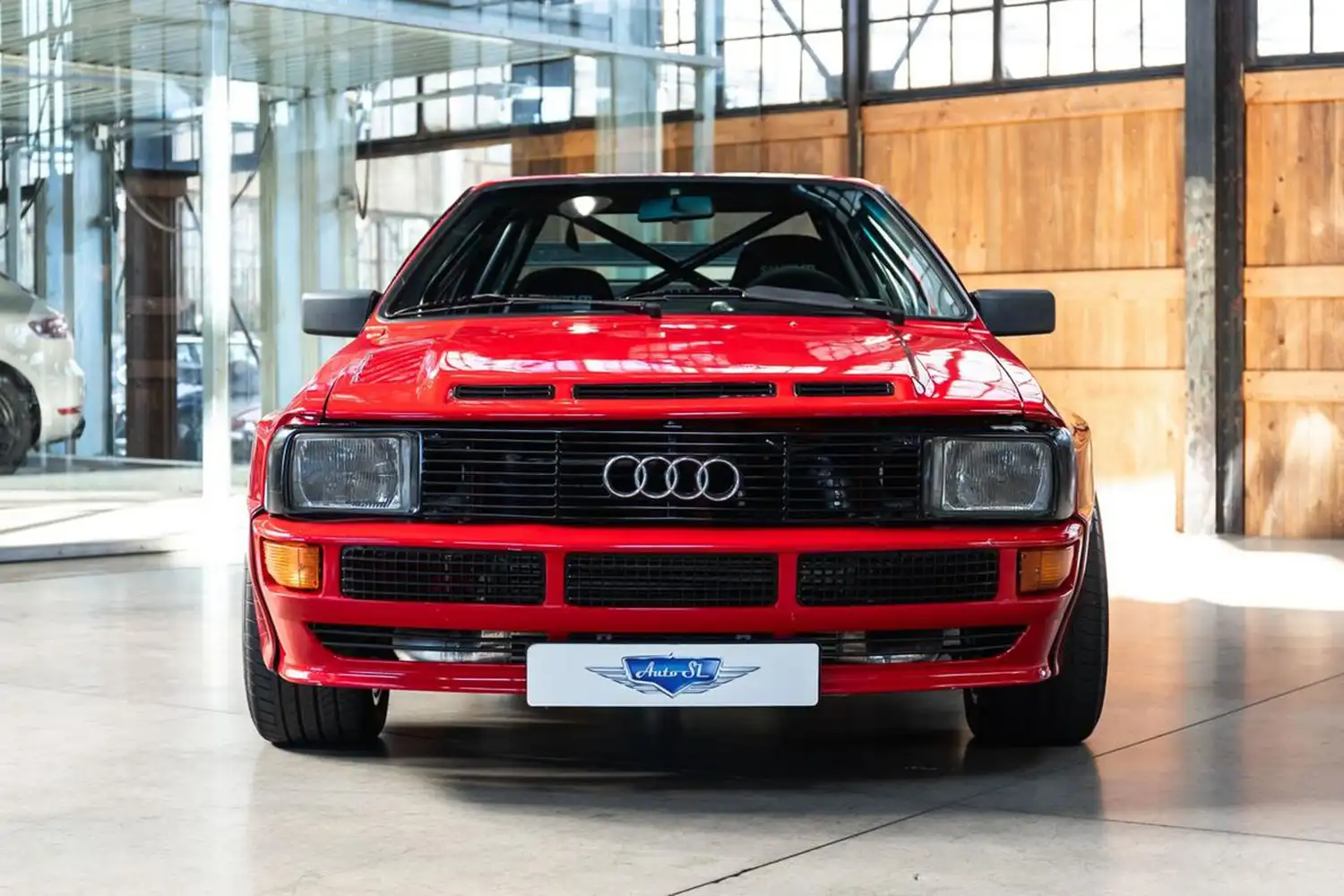
The vehicle also includes a green-tinted, heat-insulating windscreen and a locking fuel filler cap. The clear, full-width light strip across the rear adds both functionality and style.
Interior and Equipment Inside, the Sport Quattro offers a driver-focused environment with black bucket seats and a range of high-performance features. The car is equipped with an automatic transmission, power brakes, and power steering, ensuring both ease of use and superior handling. An aluminum radiator supports efficient cooling, while a rear sway bar and dual exhaust system enhance driving dynamics. An Edelbrock engine dress-up kit adds a touch of customization.
Follow Us on Reddit

Availability and Contact This mint-condition Audi Sport Quattro is available for viewing and purchase at our Düsseldorf location. Financing and leasing options are available from 3.99%, and we accept trade-ins for your current vehicle. Immediate transport, customs, and temporary license plates can be arranged on-site.
For more information or to schedule a viewing, please visit us at www.autosl.de . The asking price for this exceptional 1987 Audi Sport Quattro is $109,000.
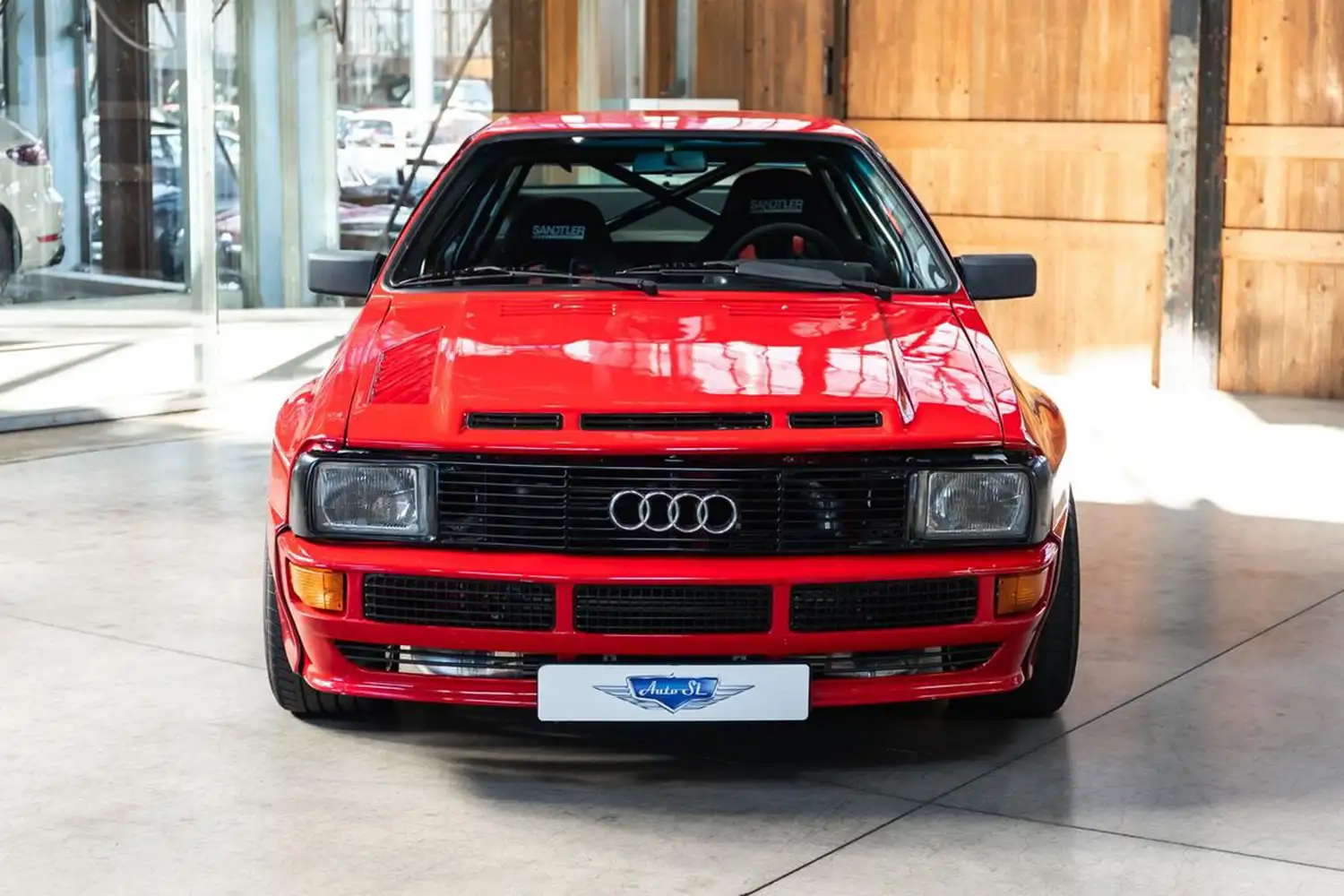
- Engine : 2.1L Inline-5 Turbocharged
- Power : 700 hp
- Transmission : 5-Speed Manual
- Mileage : 16,000 km
- Exterior Color : Red
- Interior Color : Black
- Condition : Mint
- Location : Düsseldorf, DE
Source: hemmings.com This Article use tools from Chatgpt
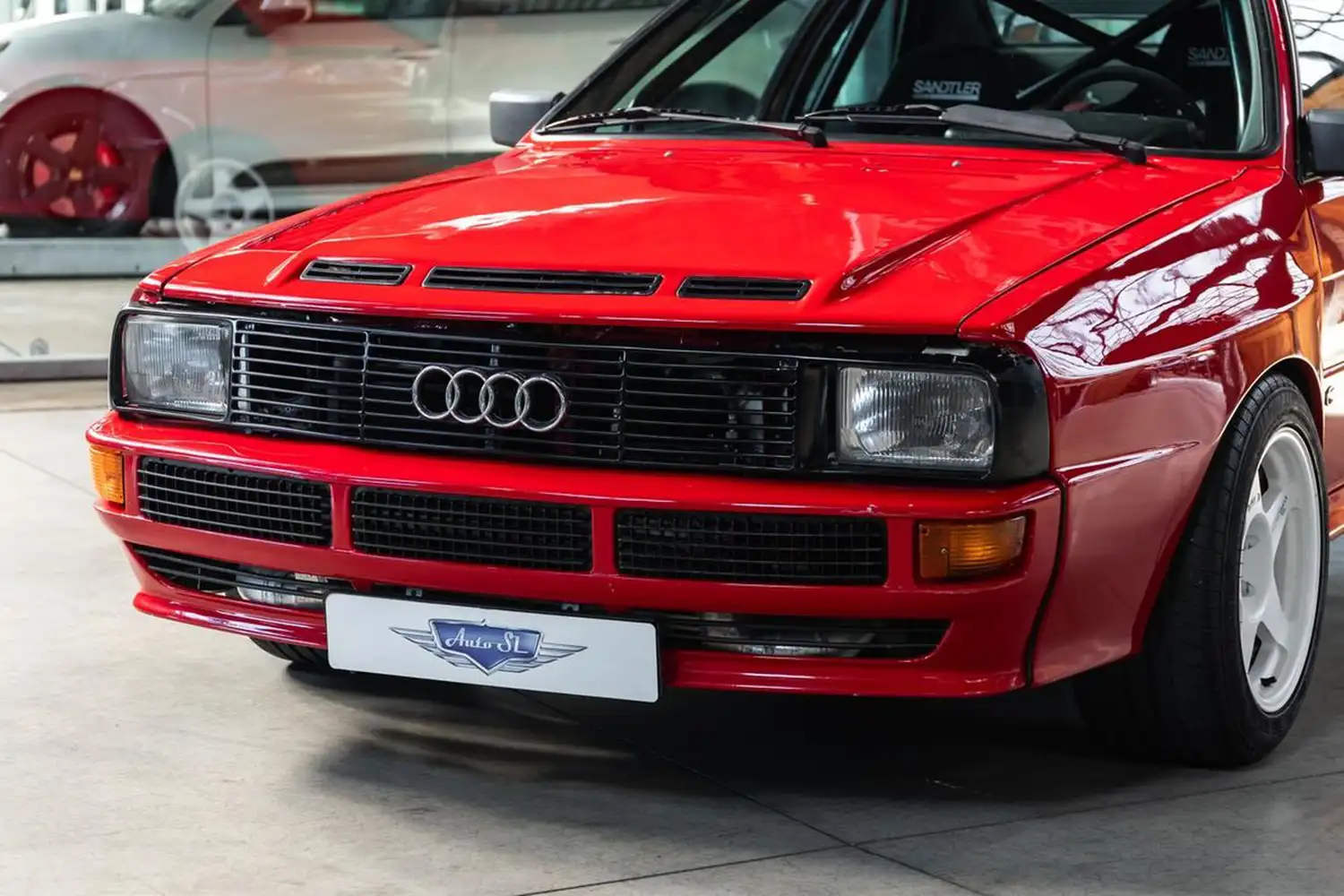

IMAGES
VIDEO
COMMENTS
The Safari Rally is an automobile rally held in Kenya. It was first held in 1953 as a celebration of the coronation of Queen Elizabeth II. ... Audi 200 Quattro: WRC 1988 36th Marlboro Safari Rally (31 Mar - 4 Apr) Miki Biasion: Tiziano Siviero: Lancia Delta HF Integrale: WRC 1989 37th Marlboro Safari Rally
Hannu Mikkola and Arne Hertz winning the 1987 Safari Rally in an Audi 200 quattro. Audi Sport debuted its 200 quattro on the 1987 Monte Carlo Rally, where R ö hrl finished third. Three months ...
In 1983, Audi offered the 80 saloon in quattro specification, the top-of-the-range model further embellished by twin headlamps, a front spoiler with integrated fog lamps, a body-coloured rear spoiler, "quattro" script on the boot lid, and a twin-pipe exhaust. On 2 March 1983, Audi Sport UK, in partnership with David Sutton Motorsport of ...
Hannu Mikkola with Audi 200 quattro at 1987 Safari Rally. Ahead of the curve at the famous Pikes Peak. The S1 E2 would become the final car produced by Audi for the Group B. The final factory machines of 1986 were rated at about 600 bhp. After the tragic 1986 Rally Portugal, when Henri Toivonen and his co-driver Sergio Cresto died, the works ...
1978-1987: The quattro era
Highlights 00:00Bonnet, Hood 00:33Stage results 03:06 | Chase view 03:13TOP 1 Steam PC LeaderboardQuick play, Time Trial Gameplay PC Logitech G920New Persona...
"African Roulette" is a wonderful slice of rally history and documents the 1987 East African Safari Rally. Featuring a host of awesome cars like the Audi 20...
Audi 200 Quattro, Group A rally car, built in 1987 (184kW/250 bhp at 6,000 rpm): In 1987, the Rally World Championship was only held in Group A. In this year Audi clinched a double win in the challenging Safari Rally with its teams Mikkola/Hertz and Röhrl/Geistdörfer. SUBSCRIBE BELOW TO READ THE FULL STORY. RallySport Magazine Subscription.
Compared to the peerless Lancia Deltas that positively took over the 1987 season, the Audi 200 Quattro was overweight and ungainly. The Audi Sport team won just one rally all season with the car—which would also prove to be their last in the WRC in general—but it was a special one. The Safari Rally in Kenya is held on open roads over vast ...
For 1983, Audi homologated into the new Group B formula, renaming the rally car the quattro A1. This was replaced by the A2 later the same season, a marginally smaller engine displacement on the ...
Then Audi came back in 1987 to win the punishing Safari Rally. After owning the rally world, it was time for Audi to set its sights a bit higher and move on to circuit racing. The Path To Owning The Paved Circuit. In 1988, the Audi 200 Quattro joined the Trans-Am Series. The following year, the Audi 90 Quattro entered IMSA-GTO in the United States.
Mikkola wins the 1987 Safari Rally with the Audi 200 quattro. Audi. However, it was during his time with Audi that Mikkola will be remembered by most rally fans, picking up ten victories, including double wins in the RAC, 1000 Lakes and Swedish Rallies with co-driver Arne Hertz beside him. His last win with the German team was at the 1987 ...
We went back to steel…'. Clockwise from left 30 years on, kicking up a dust-storm in the Maasai Mara; Hannu Mikkola and co-driver Arne Hertz, triumphant in 1987; on their way to victory. Audi was very sensitive to that aspect, especially considering the price Group B had levied in so many cases.
Michèle Mouton - Wikipedia ... Michèle Mouton
• Converted by Audi Sport in 1984 to "Safari-spec", and entered in the 1984 WRC Safari Rally, where it finished 1st in class, and 10th overall in Group A ... Having already released the mesmerising four-wheel-drive Audi quattro B2—the all-conquering "Ur-quattro", which shared the body shell and multiple components from the Coupé ...
The final rally of 1983 was at the Audi Sport National Rally in Aberystwyth, Wales, on 15 October, an event that highlighted the competitive nature of the 80 quattro. Piloted by Francis Tuthill and Roger Freeman, the pair stormed their way up the rankings, charging from 25th in the first stage to 13th overall, ultimately finishing 1st in Class ...
Mouton too. But Pons, now 66, remains as ageless as the iconic Audi Quattro, a car that finished third in the 1983 Safari Rally in the hands of Mouton and Pons. The good news is that Pons will be the star attraction in the WRC Safari Rally, co-driving Kenyan Piero Cannobio in her second WRC Safari Rally since 1984, although she was here for the ...
Audi already killed off the TT for its next-gen vehicle line-up, so this is everything but a serious attempt to ramp up interest in the sports coupe. Instead, Audi let its trainees get practical and design and build this one-off off-road machine. Audi TT Safari is inspired by the legendary Audi 200 Safari, which dominated 1987 WRC Safari Rally ...
Audi Quattro Sport Marlboro Safari Rally 1985 #11 Blomqvist S. - Cederberg B. Night version. 1:43. Trofeu RRde23. Audi Quattro Sport Int. ADAC 3-Städte Rallye 1984 ... Audi Quattro Sport Rally of the 1000 Lakes 1984 #7 Mouton M. - Pons F. Night version. 1:43. Trofeu RRFI17. Audi Quattro Sport ...
The 1987 Audi Sport Quattro stands as a pinnacle of automotive engineering and design. With only 220 units produced, and an additional 4 built from spare parts, this model represents a rare and coveted piece of automotive history. It was crafted to deliver extraordinary performance and a distinctive look that still captivates enthusiasts today.
May 25th, 2020 - 1980 audi quattro rally car prototype audi s quattro system did turn out to be predominantly slower than rwd in tarmac rallies especially under dry conditions this was mostly due to the quattro s poor weight distribution having most of its bulk far over its nose which resulted in major understeer issues'
Moscow Rally Masters Show 2017 PS2 Audi Quattro A2 onboard. Driver Ivars Velme, Co-driver Andris Velme
This seems like a lot of car for the money -- Audi Quattro A2. Original Audi Quattro (UR) VIN (900 series) and body. Homologated for Rally Group A...
Hi Maybe someone heard a similar sound? This is normal? How can I fix it? A4 B9 2.0 TFSi 25000km S-tronic 7 quattro Only on a warm engine / S-tronic. On the video car to the garage traveled 40 km. In the garage the threshold 3 cm The front wheels roll to the threshold. And add engine speed